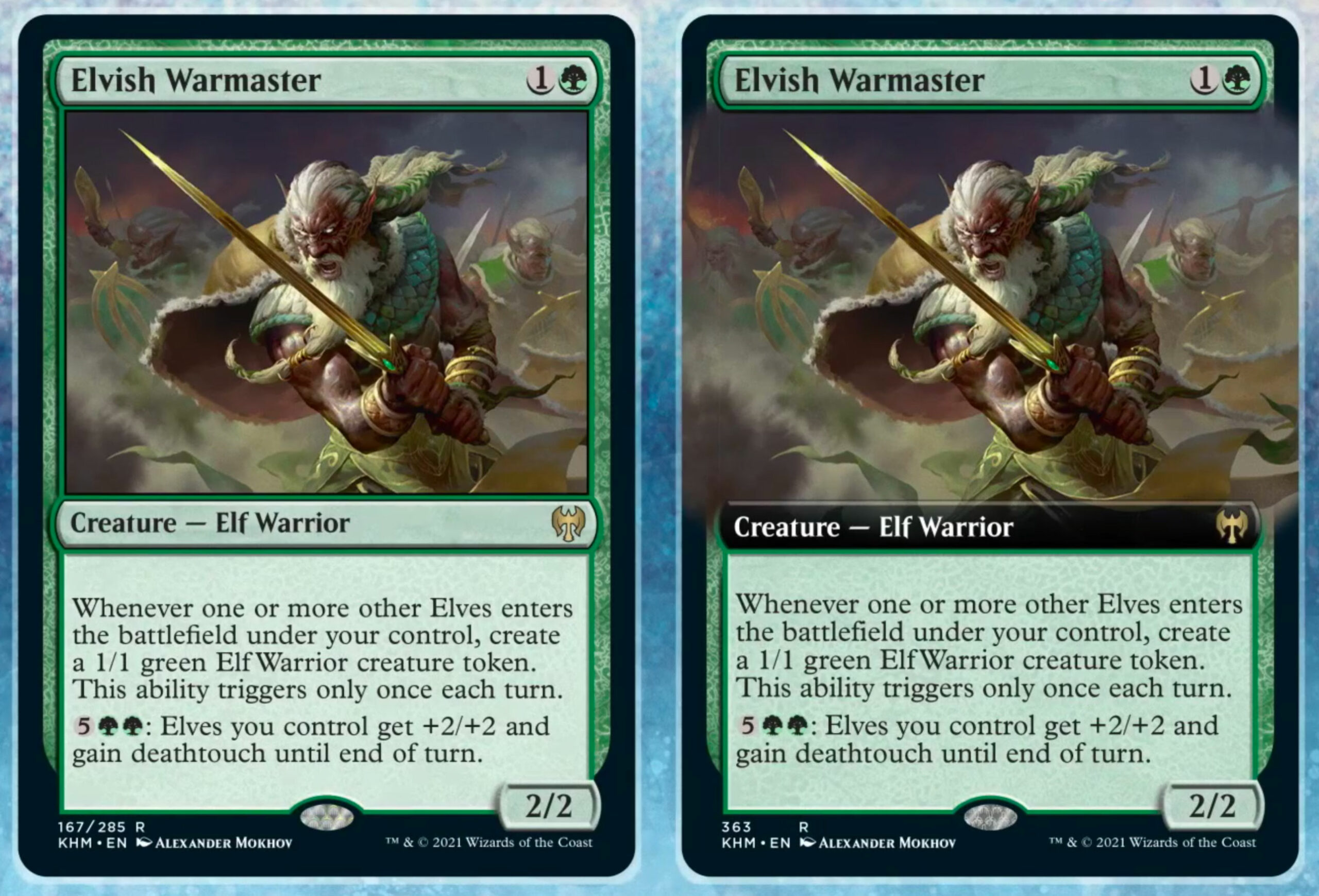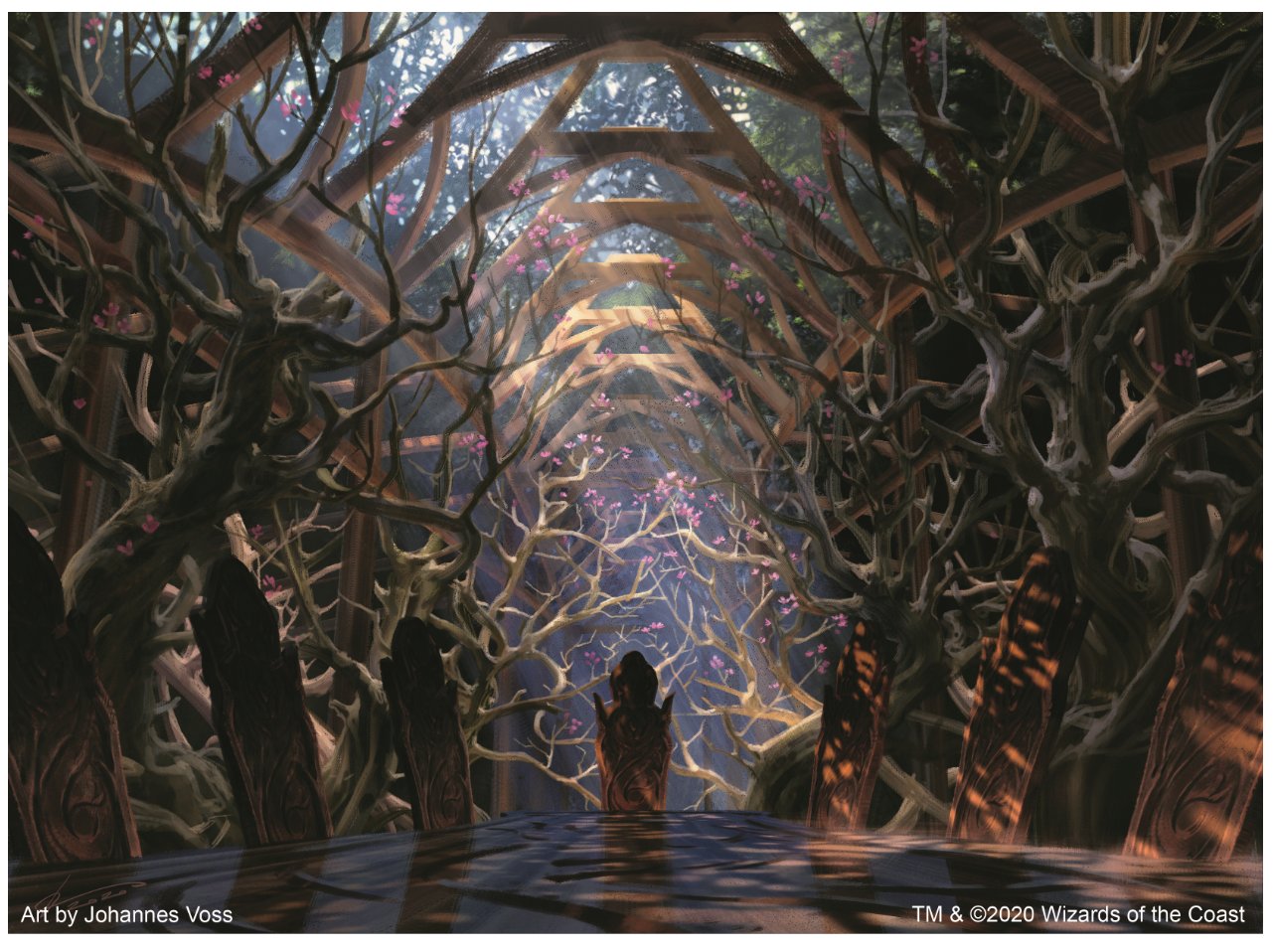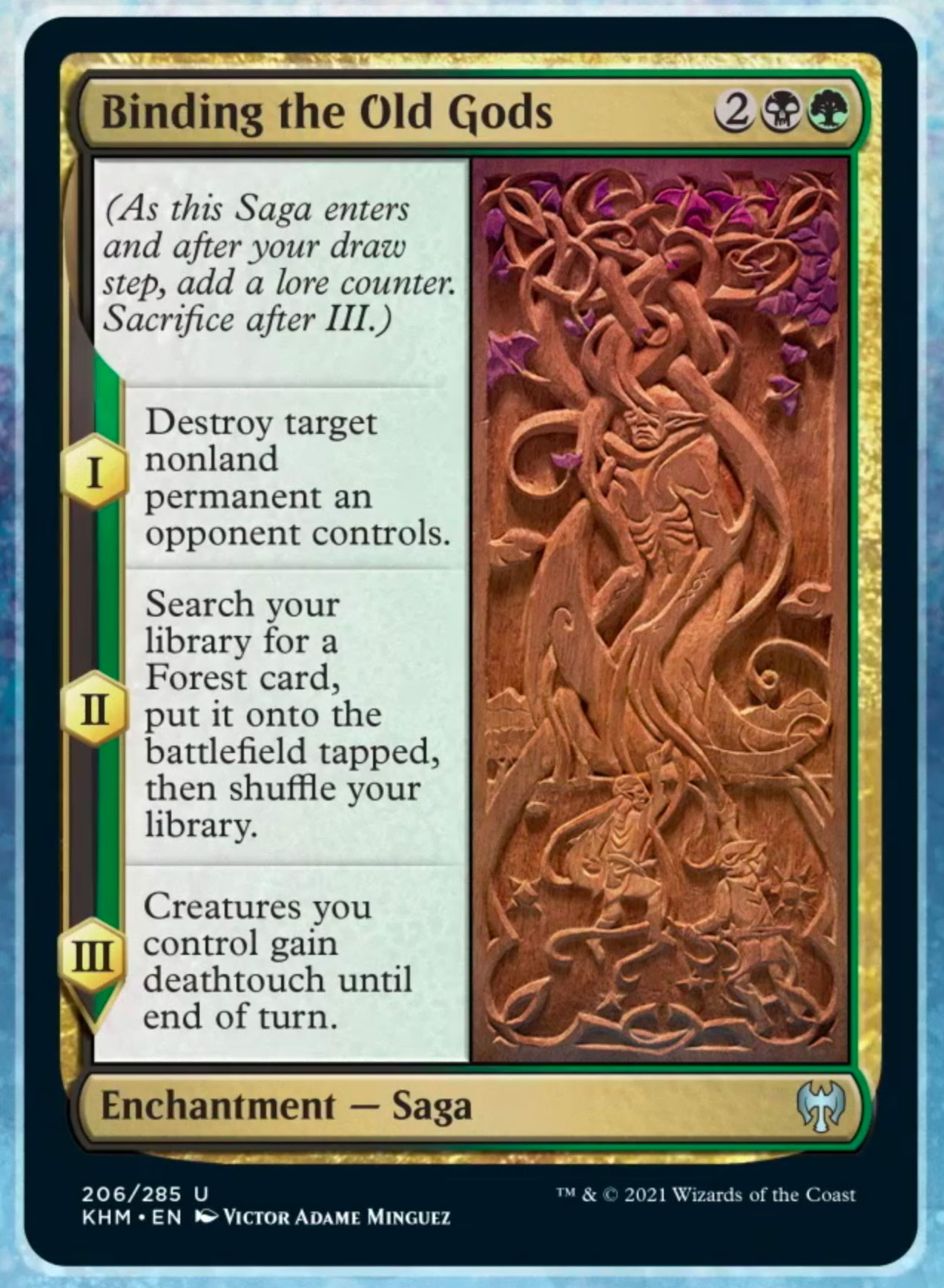We’re in the depths of Winter here in the northern hemisphere, so it’s only fitting that Wizards of the Coast has begun previewing Kaldheim, Magic: the Gathering’s newest—and possibly snowiest—expansion set.
Today’s kickoff stream didn’t feature the traditional set trailer. Instead, Kaldheim’s trailer will debut on January 26 at the New York Game Awards, which will be followed by the set’s digital release on January 28 and and its full release on February 5.
Mechanics
Two of Kaldheim’s mechanics return from Magic’s past, Snow and Sagas, and are joined by two brand new mechanics, Foretell and Boast.
Snow
Last seen in Modern Horizons, the Snow mechanic is returning in Kaldheim.
As one would expect in a Snow set, Kaldheim includes snow basic lands. Each type has two different pieces of art and will feature a new Snow frame—but they won’t be full art. Each Draft Booster will include a Snow basic land slot and has a chance to be foil.
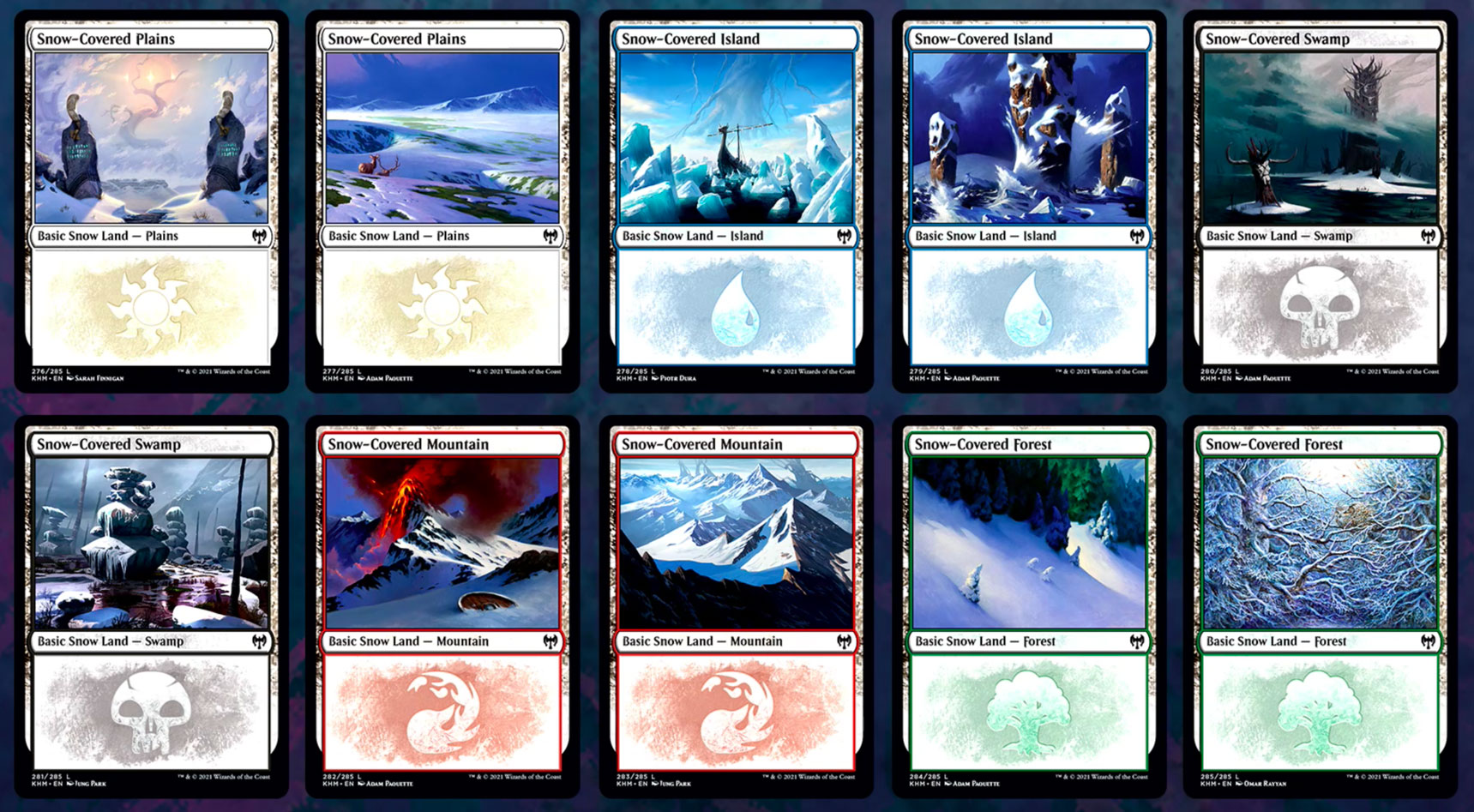
In addition, there are new Snow dual lands in Kaldheim. They are similar to the Coldsnap dual lands, in that they enter the battlefield tapped, but they have basic land types and are thus fetchable with fetch lands. There is a chance for one of the duals to take the Snow land slot in Draft Boosters and they also have a chance to be foil.
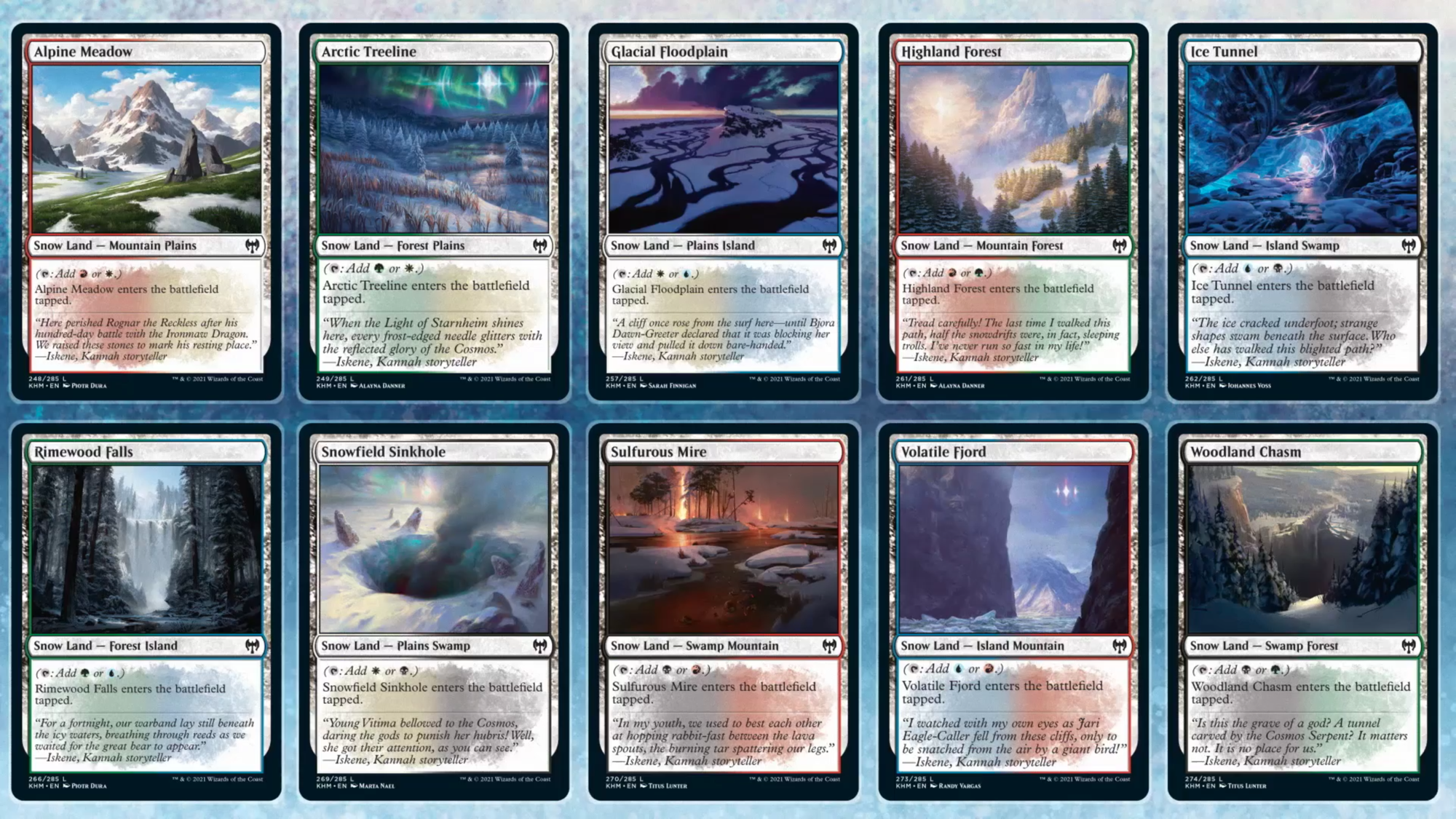
The new twist on Snow in Kaldheim are Snow instants and sorceries. These act just like normal spells and don’t require any snow mana to cast—but they can have an extra effect depending on how many Snow permanents you control or even how much Snow mana you used to cast it. Like the Snow basics, they also use the new Snow frame.
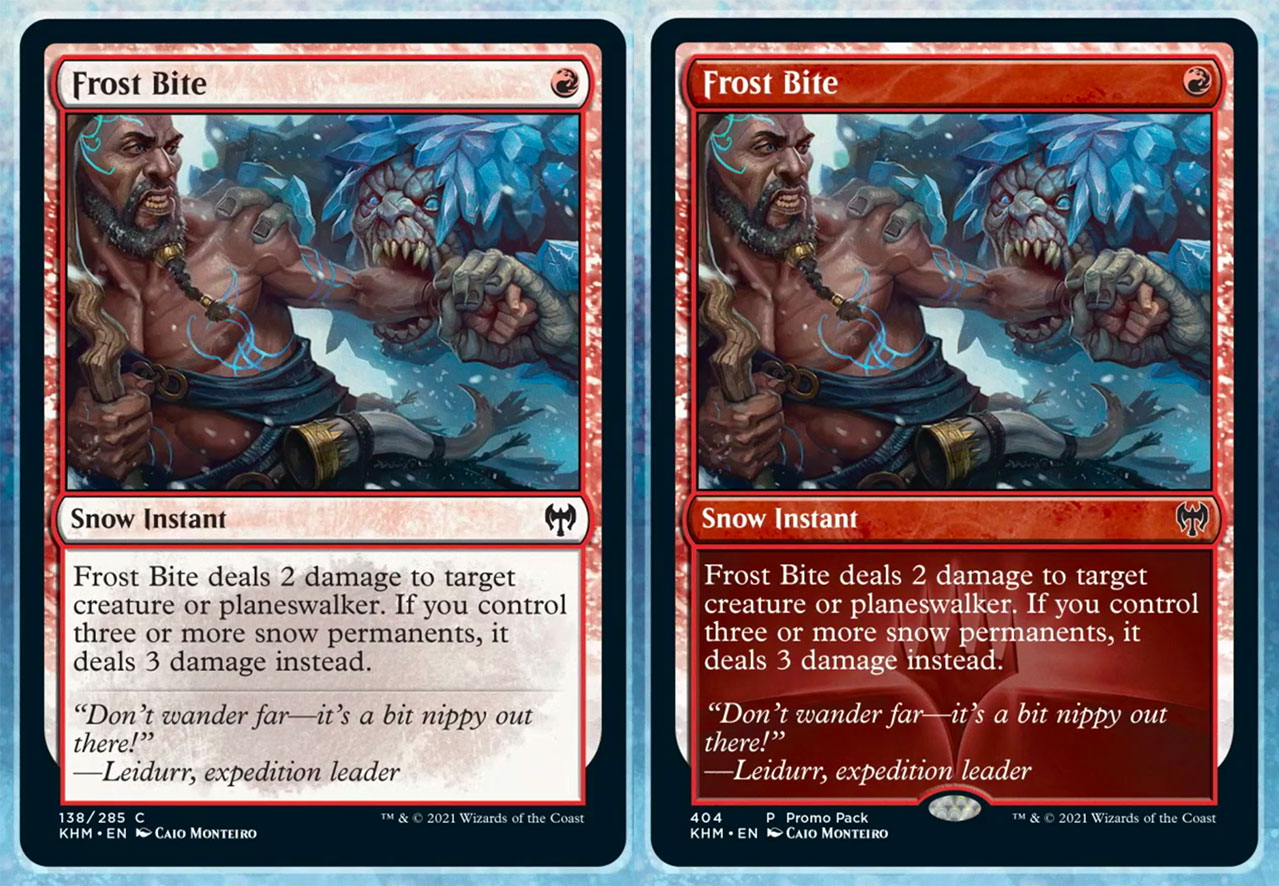
Foretell
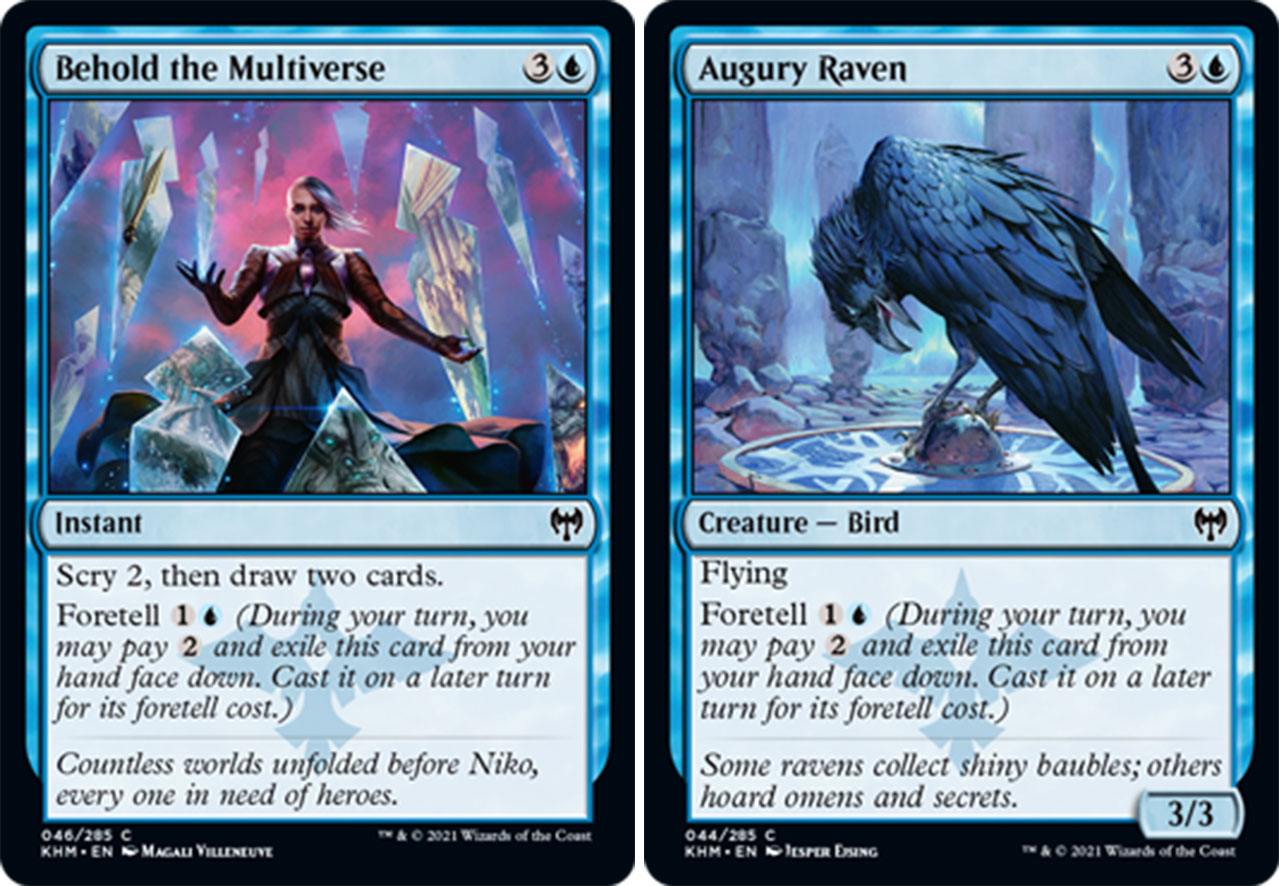
Foretell can be thought of as a variation on morph—spell morph, perhaps?—but you exile the card face down rather than putting it face down on the battlefield as a 2/2 creature.
To Foretell, you pay two generic mana to exile the card from your hand at any time during your turn. Then, on a future turn, you can then cast that spell for its Foretell cost—which is often cheaper than its actually mana cost.
Casting a foretold spell uses the stack, unlike unmorphing, and yes Drannith Magistrate does prevent players from playing foretold cards.
Boast
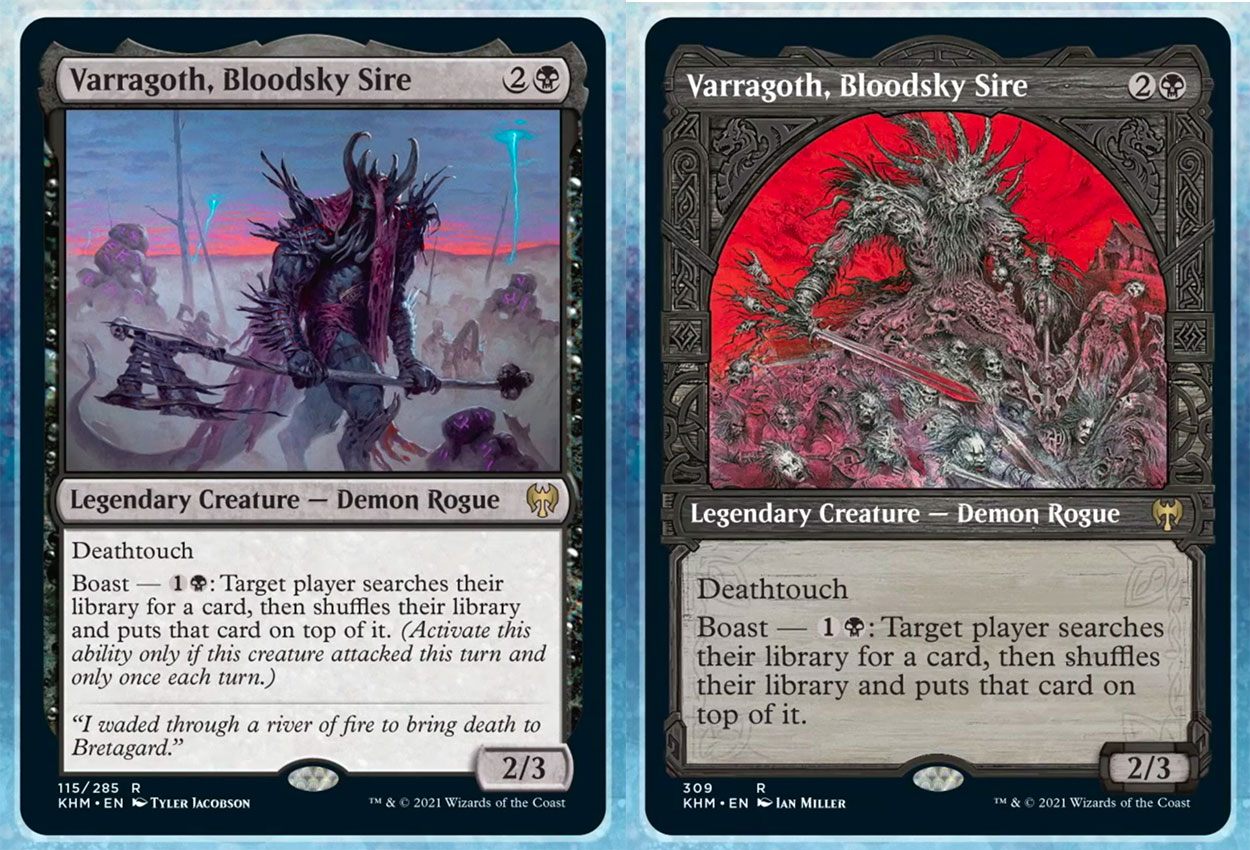
Boast is the second new mechanic in Kaldheim and functions as a set of activated abilities that can only be used if the creature with the ability attacked that turn. Boast is kind of like an activated ability with Raid (from Khans of Tarkir) on it, except it only cares if the creature the ability is on attacked.
Like other activated abilities, Boast abilities can be played at instant speed—meaning they be activated during combat, right after you attack.
Sagas
Sagas were introduced in Dominaria, made their second appearance last Winter in Theros: Beyond Death, and are returning once again in Kaldheim. There don’t seem to be any new twists to these new Sagas—except for the fact that some of the art, including the art for Binding of the Old Gods, was carved out of wood instead of painted!
Kaldheim’s Main Characters
Niko Aris
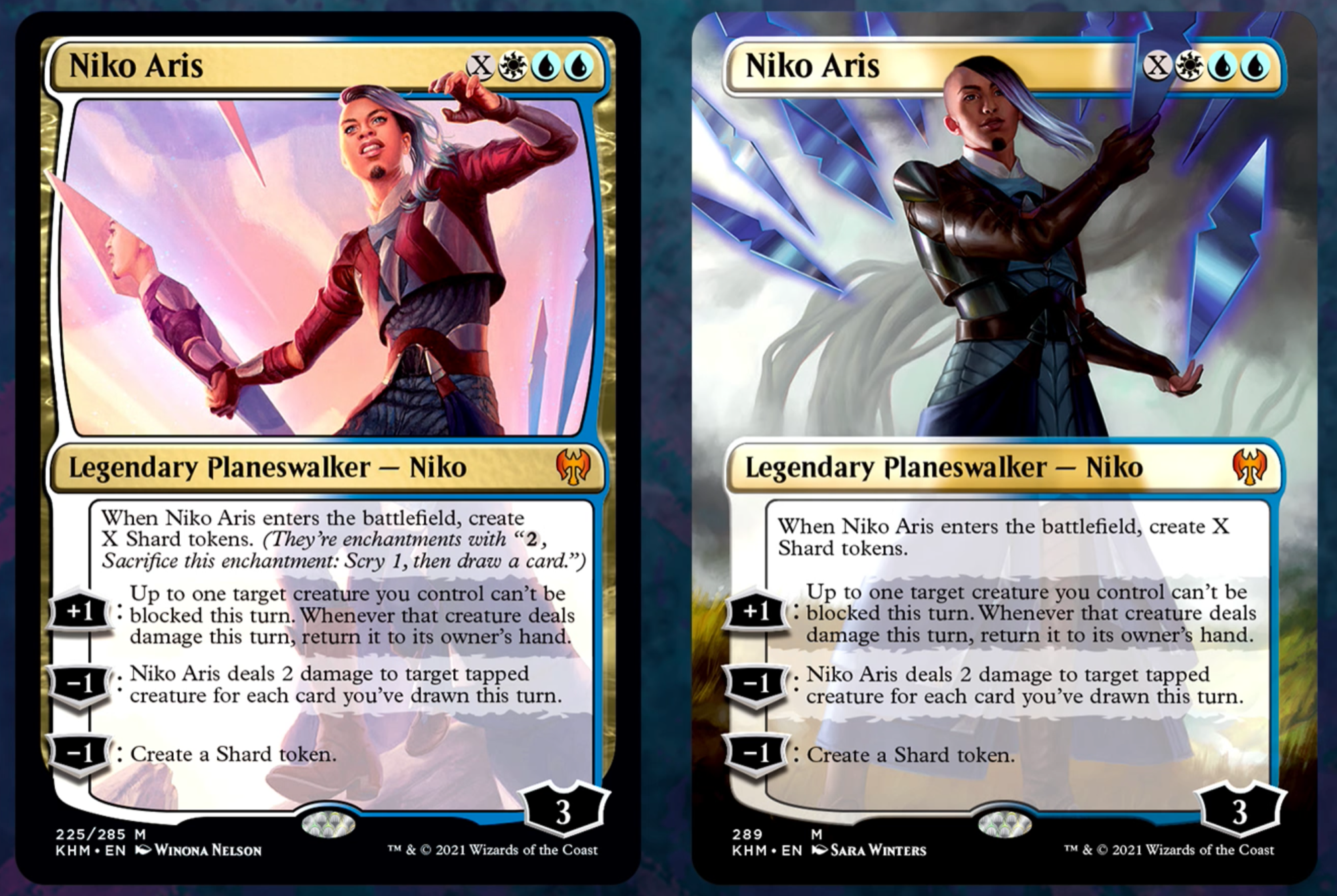
We were introduced to Niko Aris, one of the new Planeswalkers in the Kaldheim story, in December. Niko is a non-binary human from Theros who defied Klothys, causing a confrontation that resulted in their spark igniting.
Niko is has an X in their casting cost and creates X “Shard” tokens when they enter the battlefield. These Shards are enchantment token that operate like Clue tokens from Shadows Over Innistrad in that you can pay two generic mana to sacrifice the token and draw a card—but Shards let you Scry 1 before drawing the card!
Tibalt
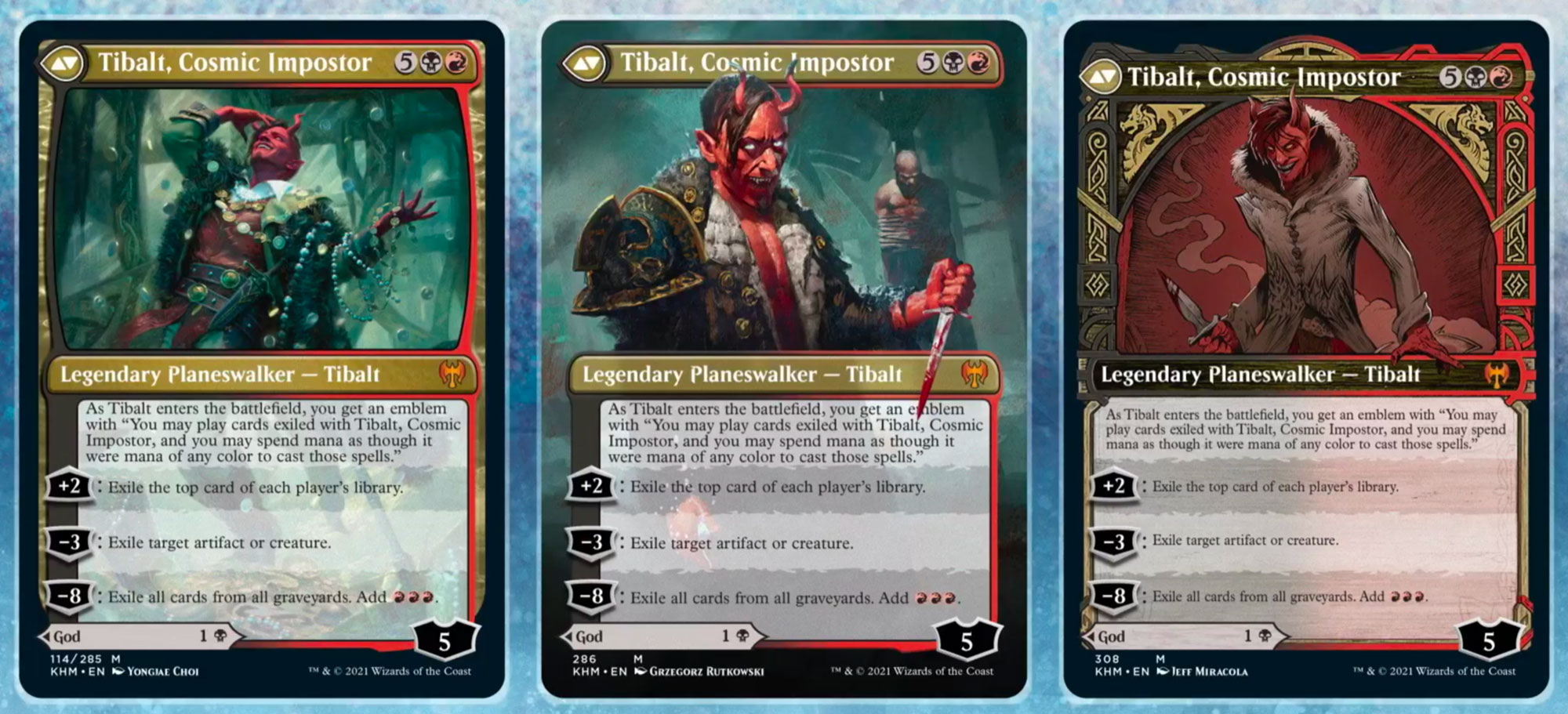
Tibalt is one of Magic’s most infamous Planeswalkers due to the fact that his introductory card, Tibalt, the Fiend-Blooded, is viewed as one of the worst Planeswalkers ever.
But Tibalt was redeemed in War of the Spark with the very playable Tibalt, Rakish Instigator and is back in Kaldheim as the story’s main antagonist. He has added Black to his color identity this time as Tibalt, Cosmic Impostor, and comes with a secret—he’s impersonating on of Kaldheim’s gods, Valki, God of Lies.
Mechanically, this means Tibalt is a modal double-faced card, with Tibalt on the front and Valki on the back.
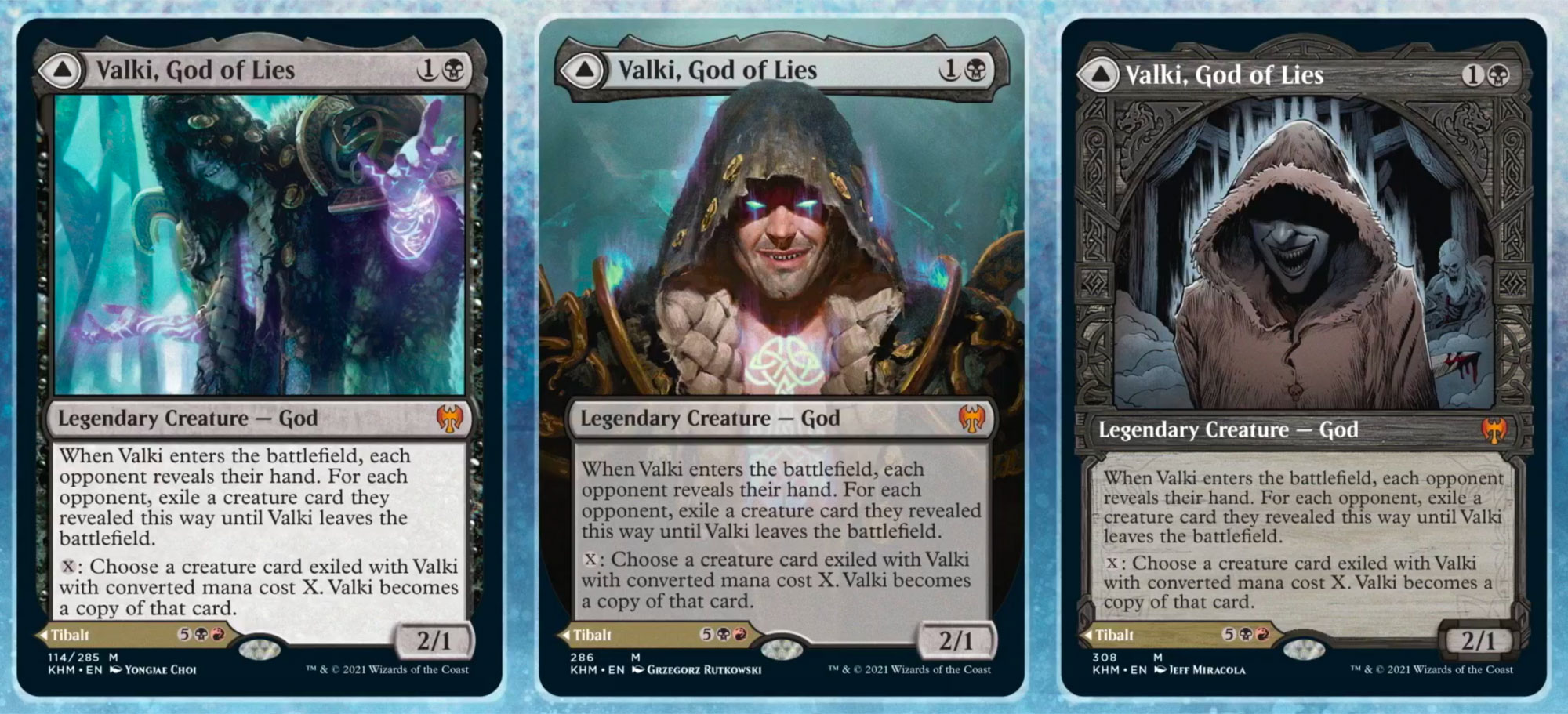
The Phyrexians?!?!
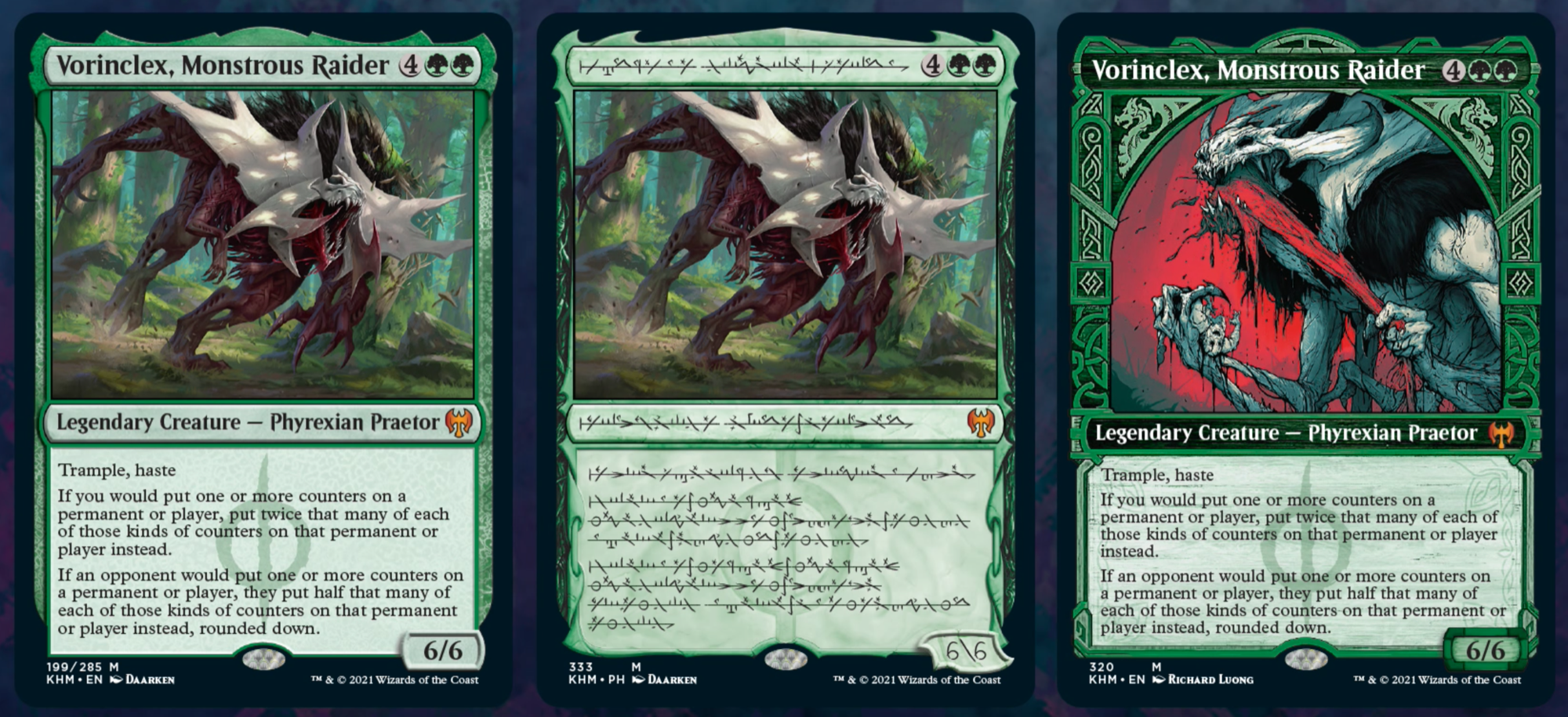
Don’t look now, but the Phyrexians are back.
We haven’t seen Magic’s oily bad guys since they took over Mirrodin and transformed it into New Phyrexia. We don’t currently know why Vorinclex has come to Kaldheim, the the card name Vorinclex, Monstrous Raider tells us that they seem to be raiding the plane.
Also, Vorinclex features the debut of the Phyrexian creature type and will come in a sweet Phyrexian version that will only be available in Collector Boosters.
The Gods of Kaldheim
We’ve already met one of Kaldheim’s gods, the mono-White Halvar, God of Battle, and we know that Tibalt is impersonating the mono-Black god, Valki, God of Lies.
We also met a third god, the mono-Blue Alrund, God of the Cosmos, who is modeled on Odin and his ravens. Alrund, like Halvar and Valki, is a modal double-faced card with a legendary raven on the back.
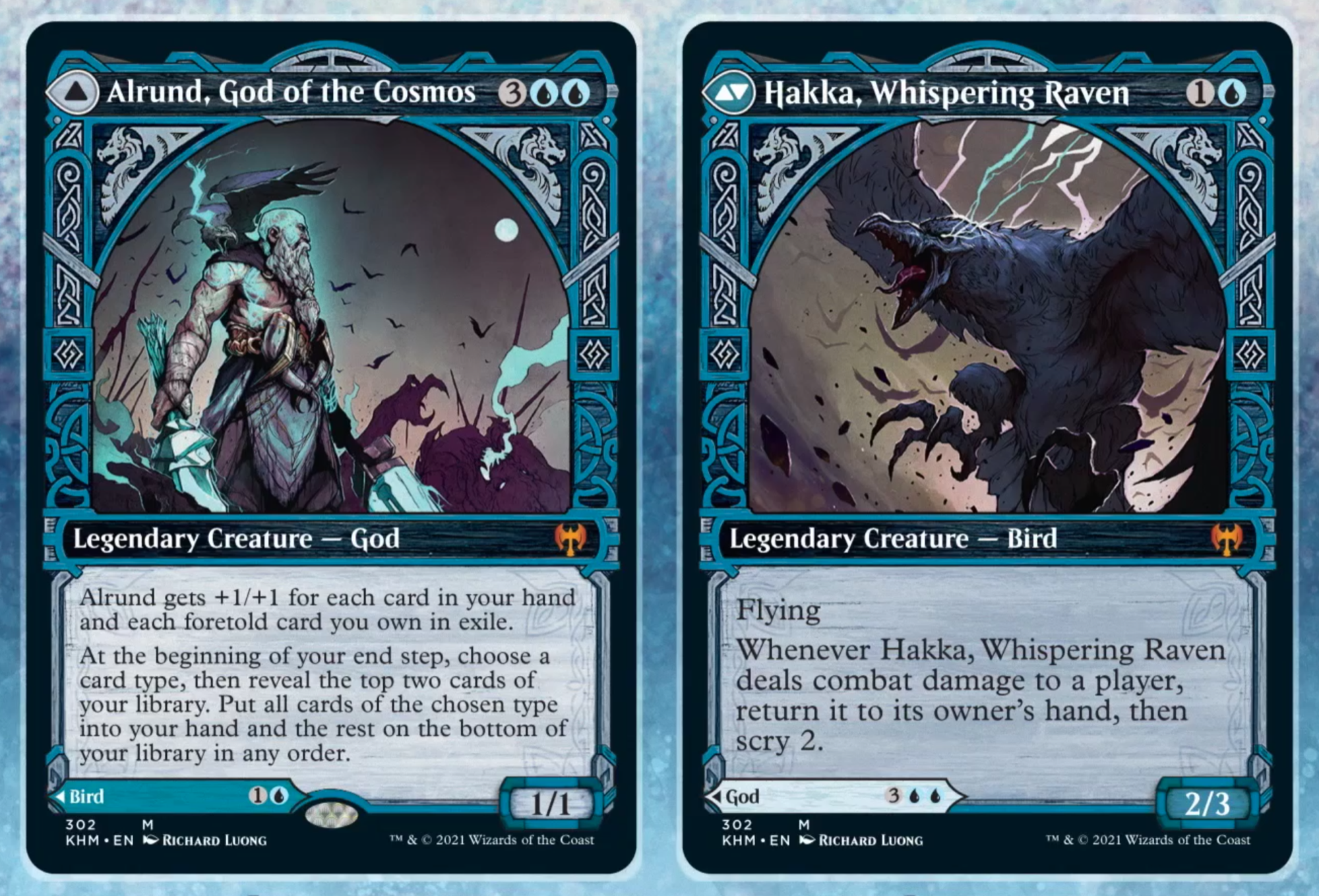
The raven theme can also be seen in Aldrund’s Epiphany, a Time Walk with two 1/1 birds and Foretell.
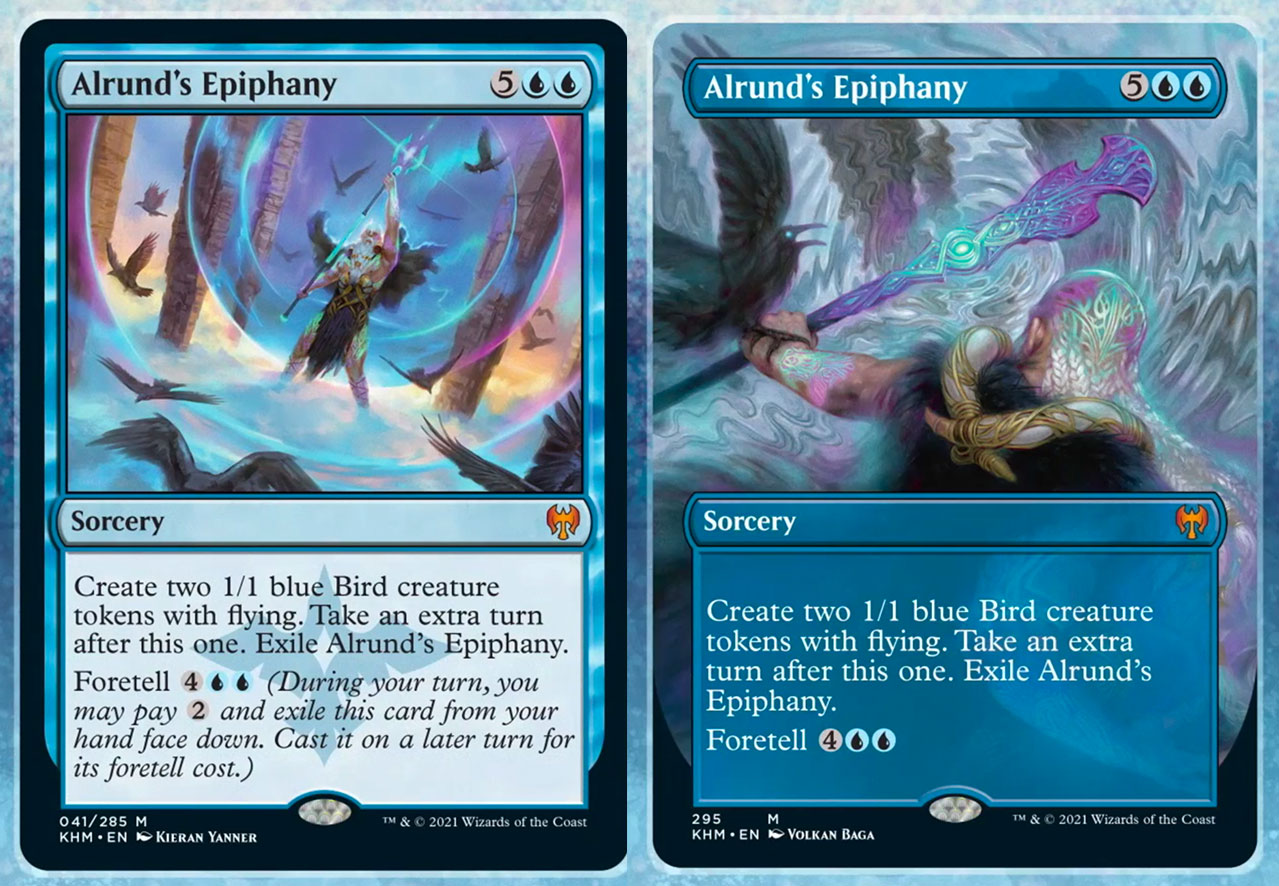
The 10 Realms of Kaldheim
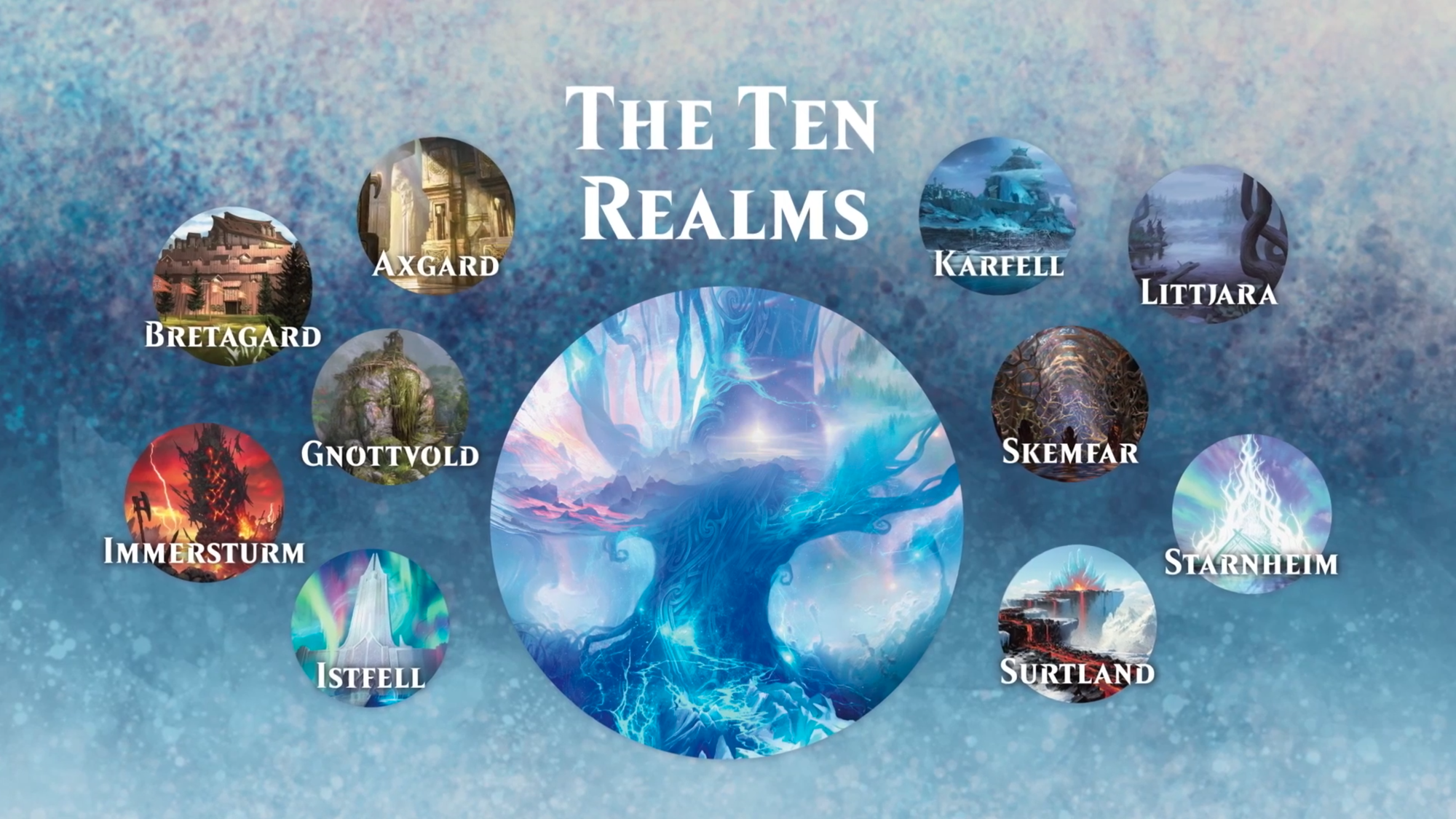
“Kaldheim, at its heart, is centered around a cosmic World Tree,” said Art Director Cynthia Sheppard. “The plane is divided into realms,” which “operate kind of like mini multiverses which are connected like fruits suspended from the branches of the tree.”
“The World Tree is the origin of all life in Kaldheim and you can see the branches in the sky of all 10 realms,” she continued. “The realms are constantly moving and shifting around the World Tree. They can even collide in this epic event called a Doom Scar which smashes different realms together and causes earthquakes, destabilization, and chaos.”
Each of the realms is dominated by different major creature type, ranging from Humans to Dwarves, Trolls to Demons, Elves to Valkyries.
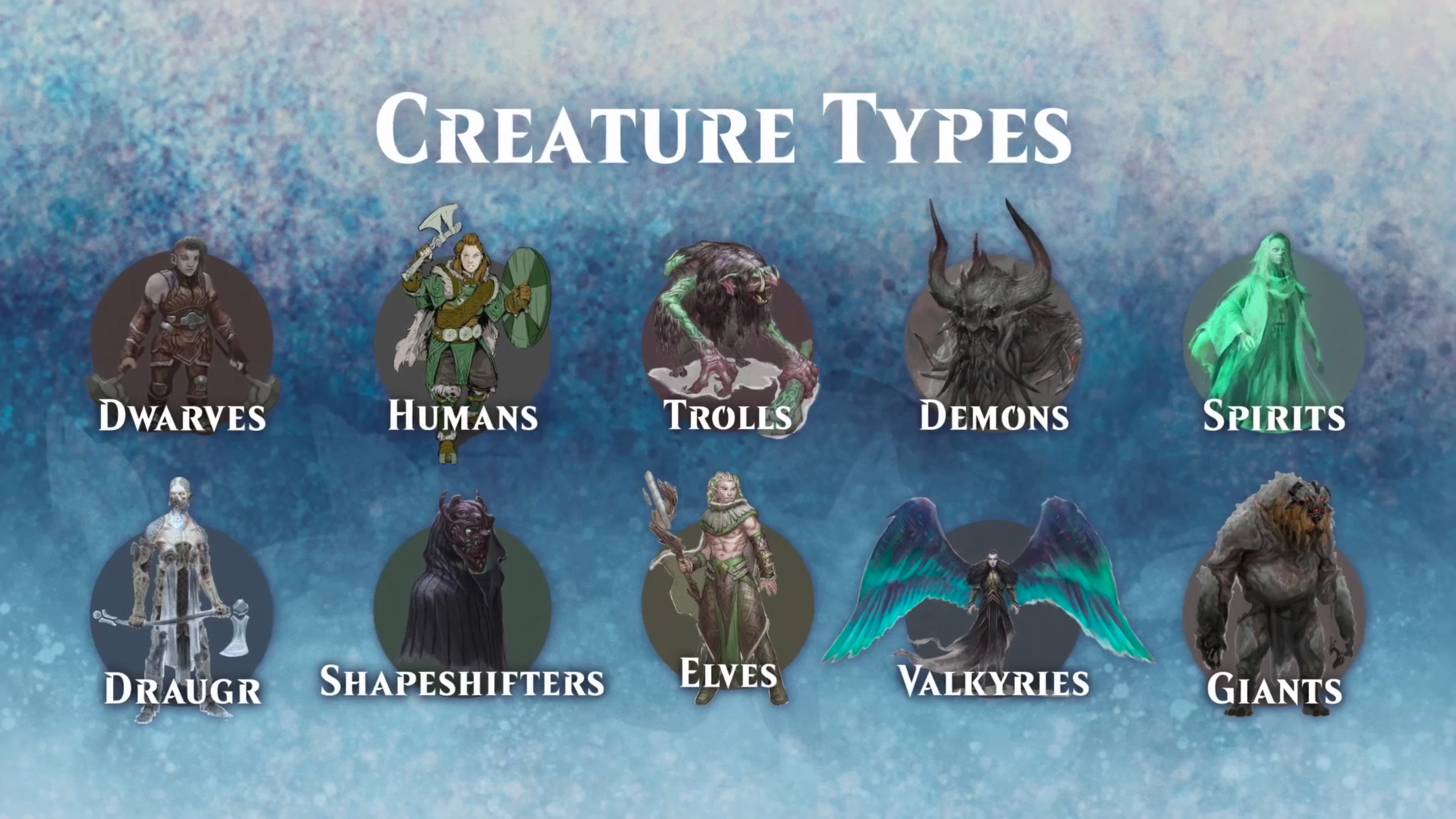
Bretagard
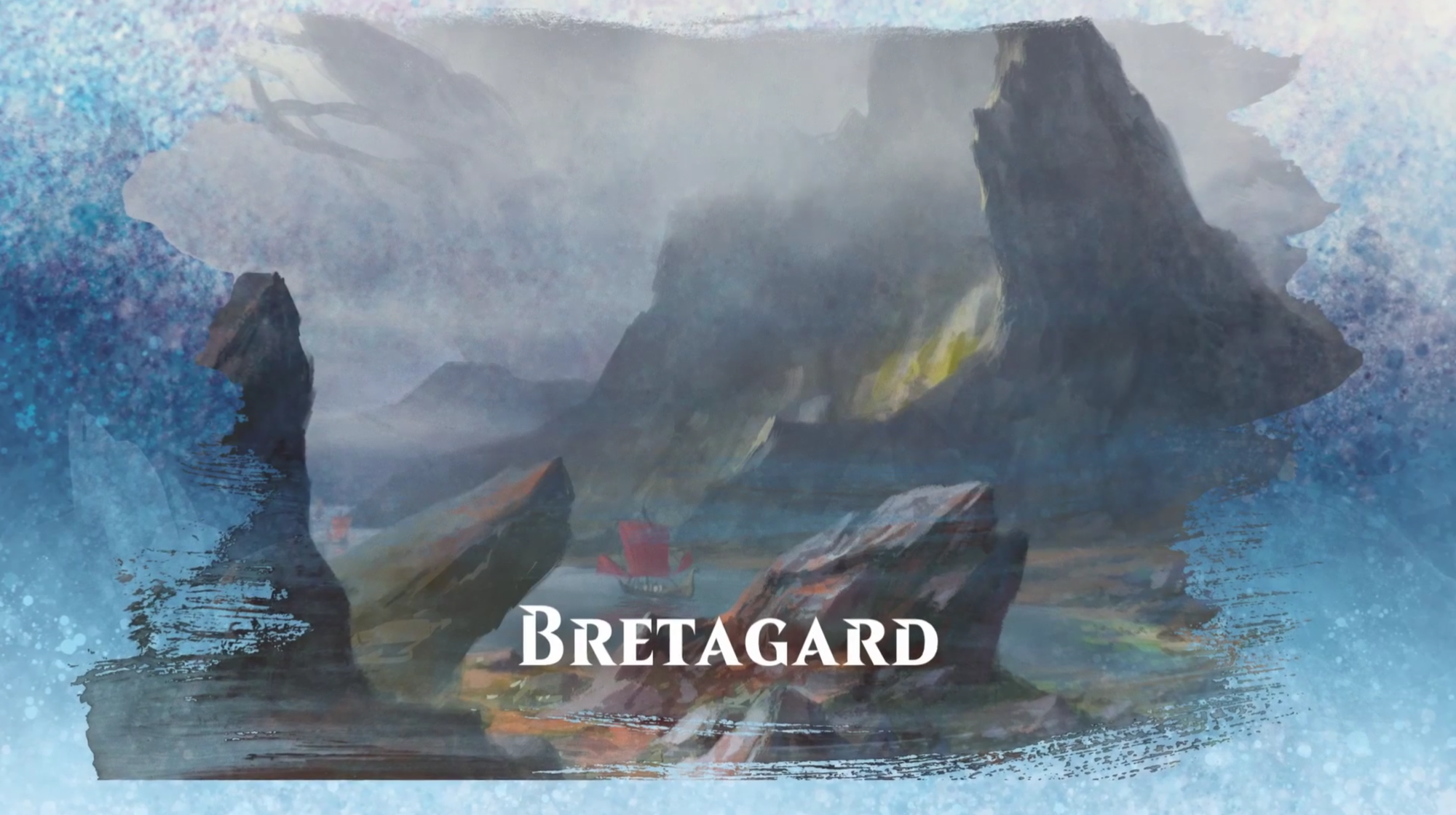
Bretagard is the home of Human Vikings that are divided into five clans that line up with Magic’s five colors: the Beskir, Omenseekers, Skelle, Tuskeri, and Kannah.
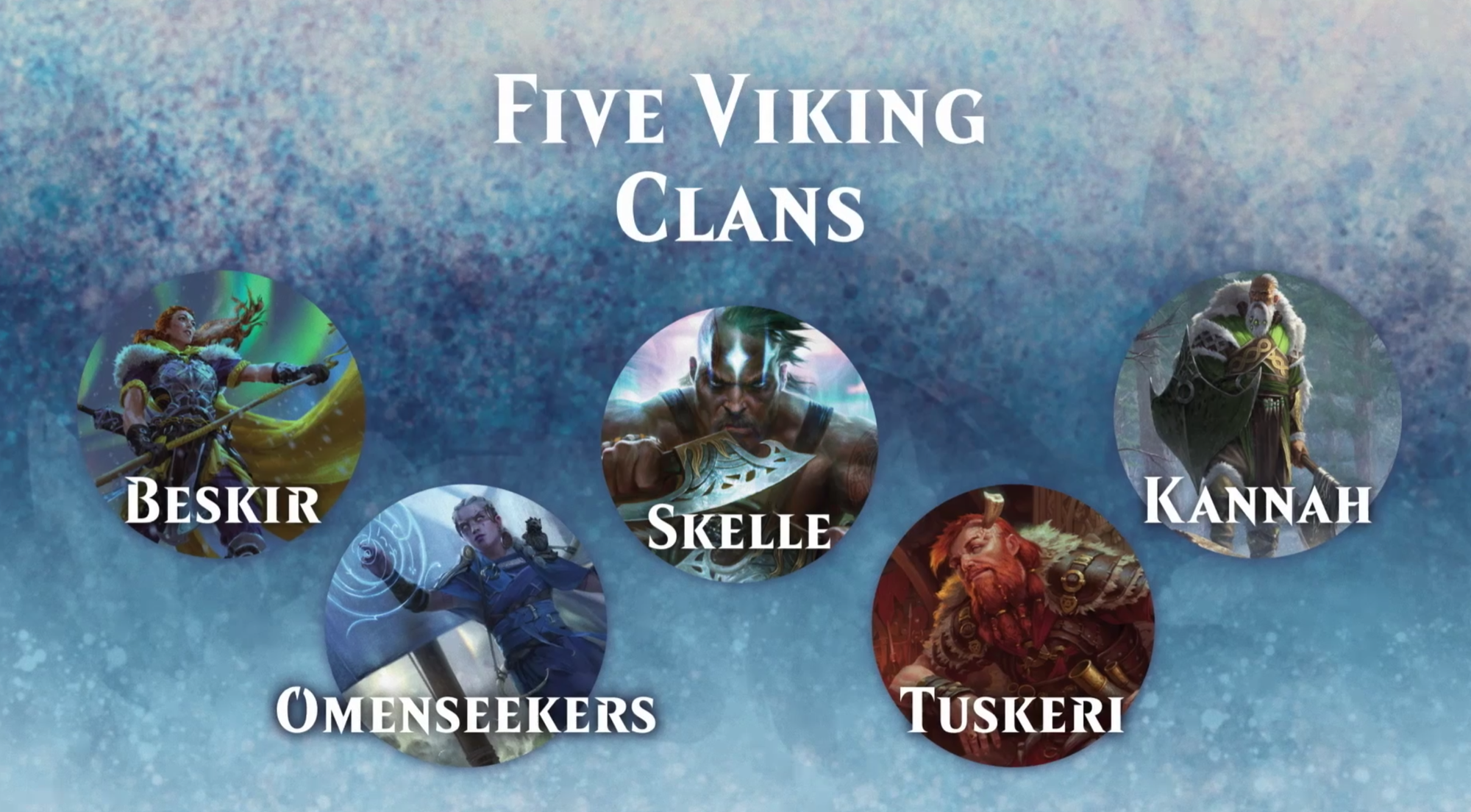
The clans are constantly in conflict with each other but are able to keep the peace thanks to the Oath of the Clans that is administered by the Beskir.
Inga Rune-Eyes, for example, is an Omenseeker from Bretagard.
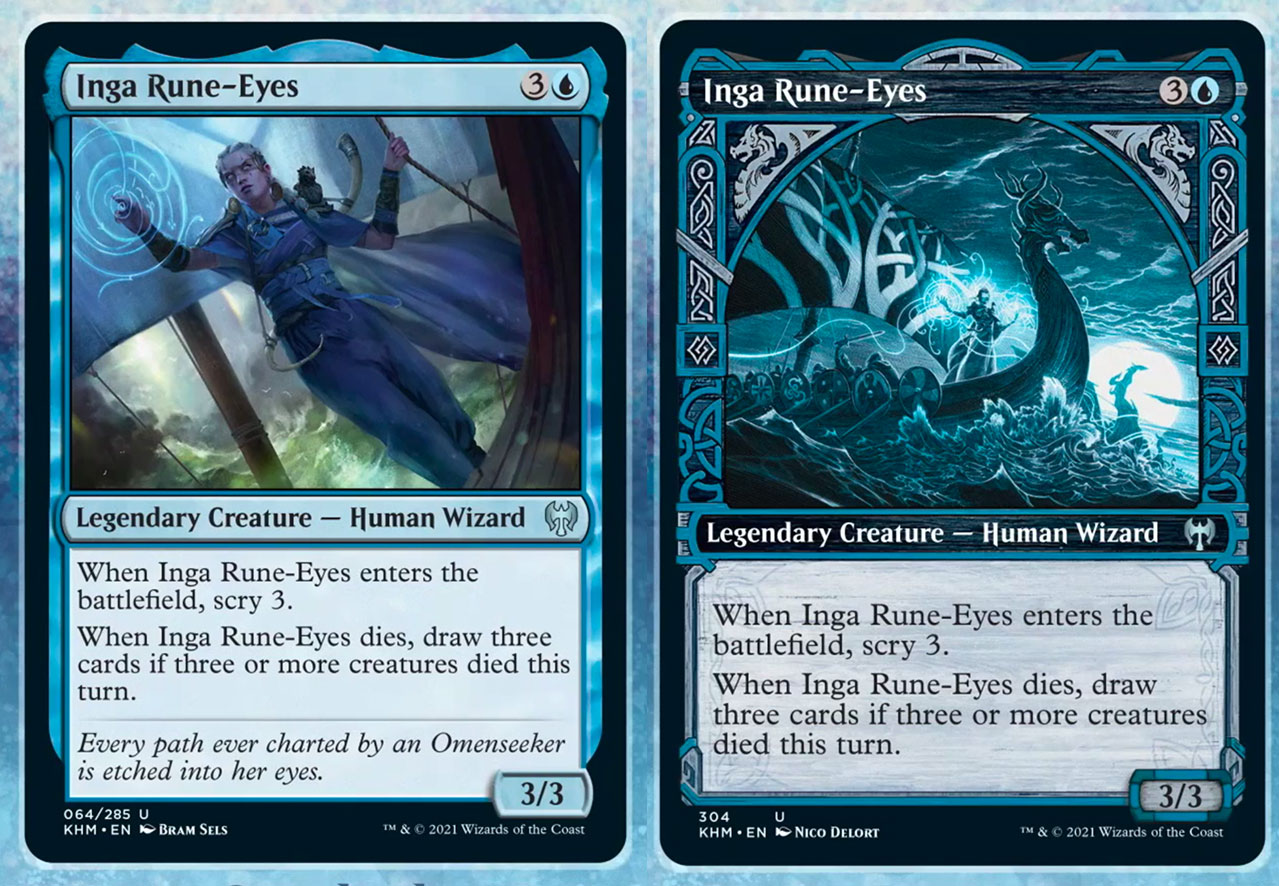
While Sigrid, God-Favored is a Beskir.
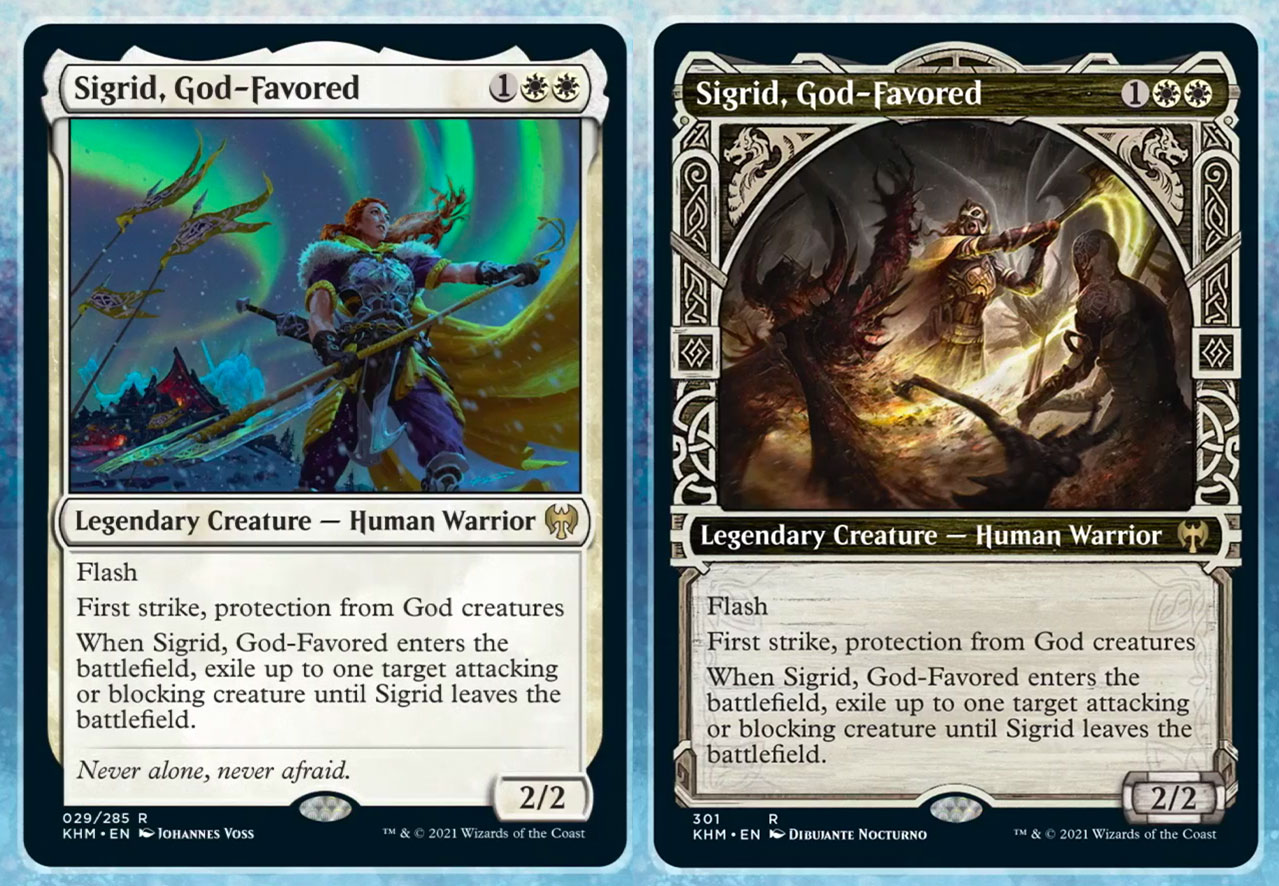
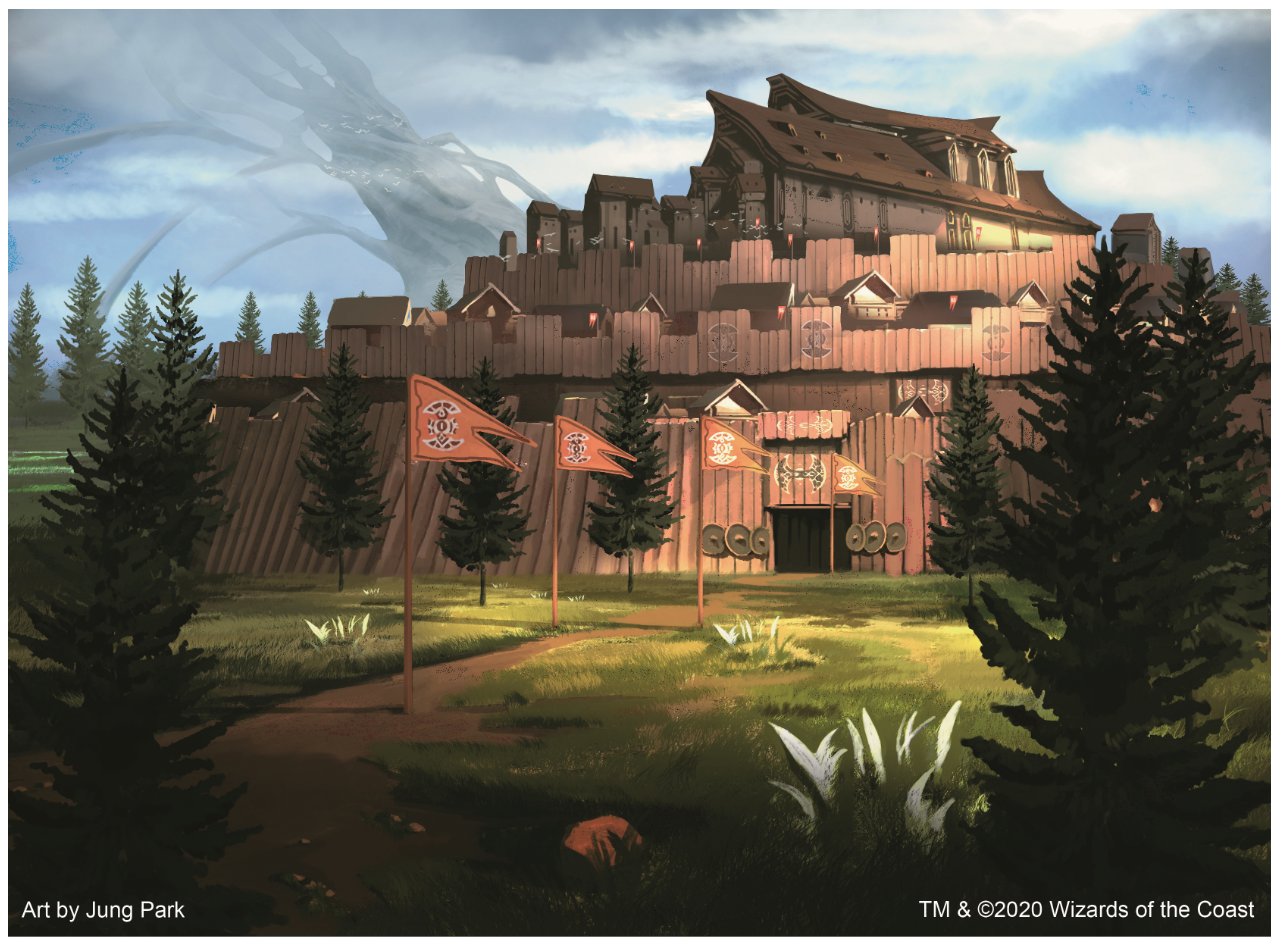
Axgard
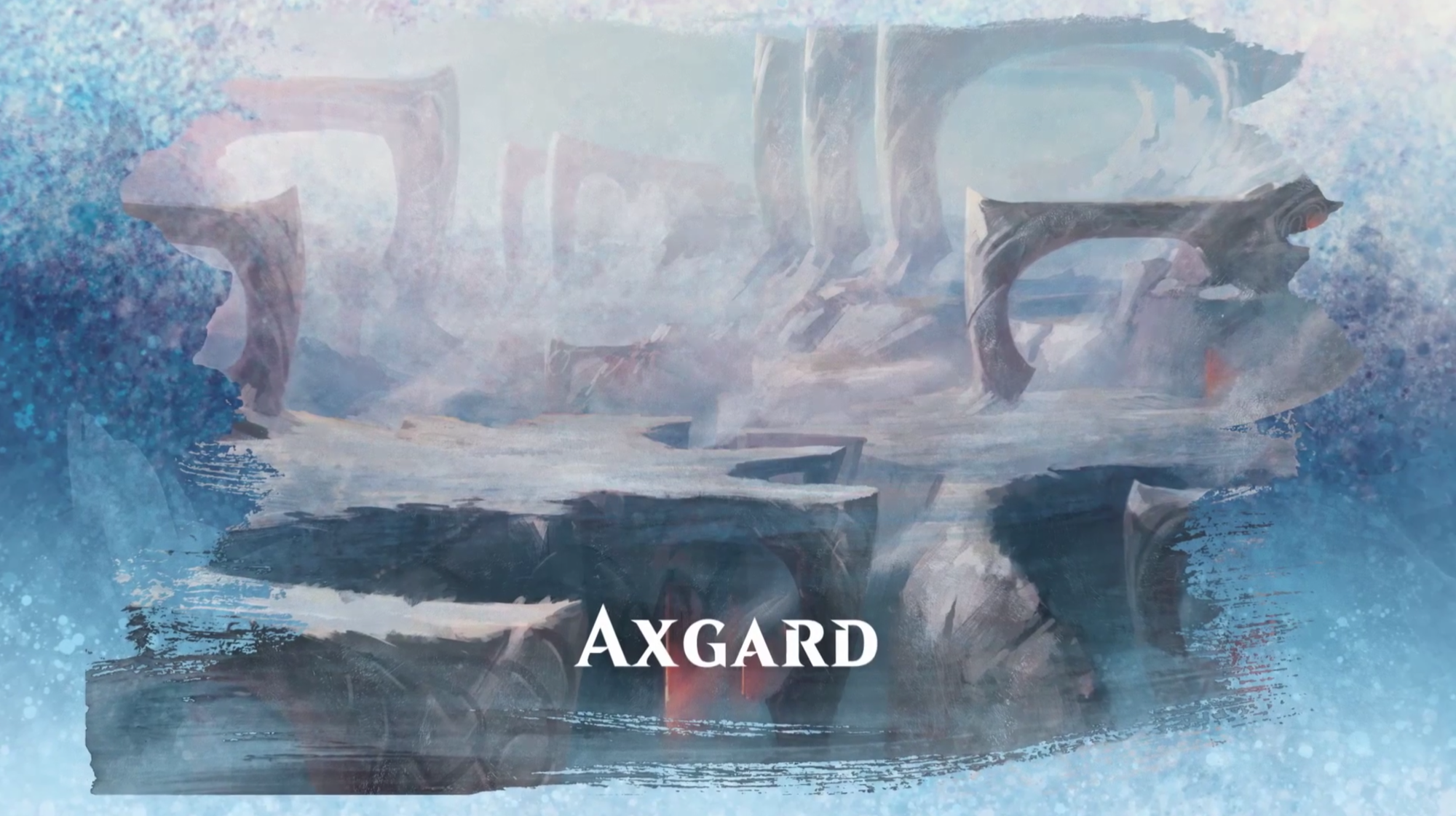
Axgard is the realm of the Dwarves.
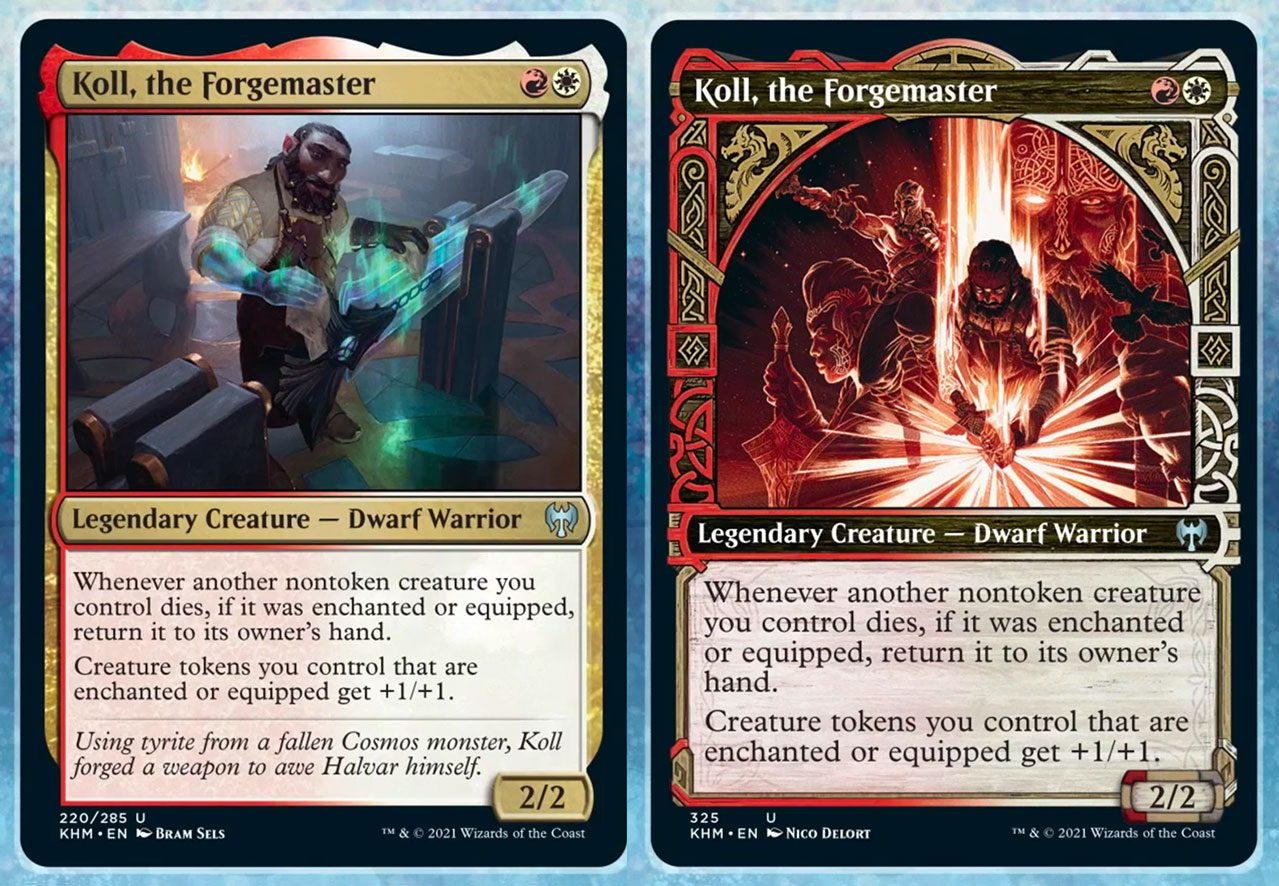
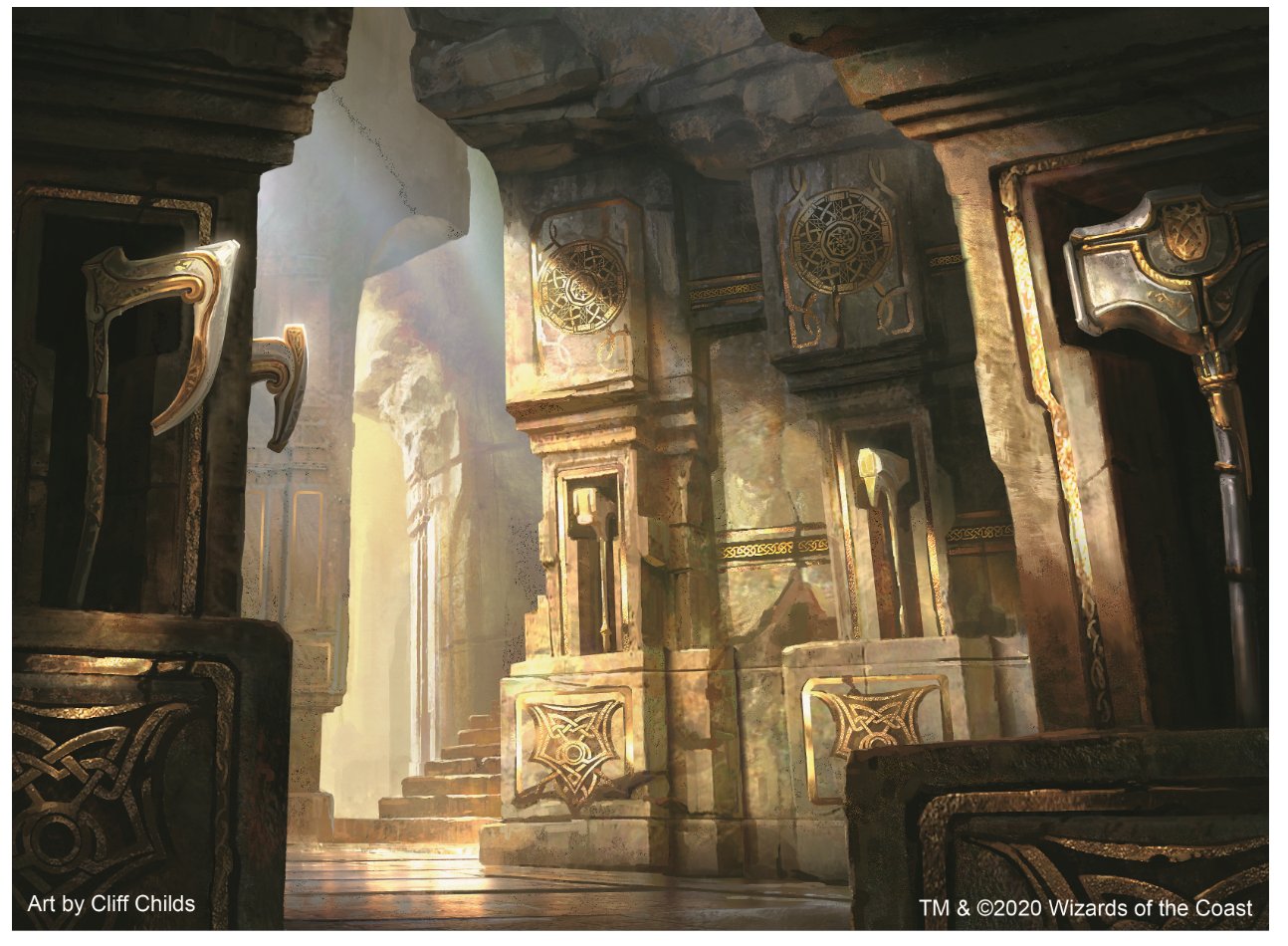
Gnottvold
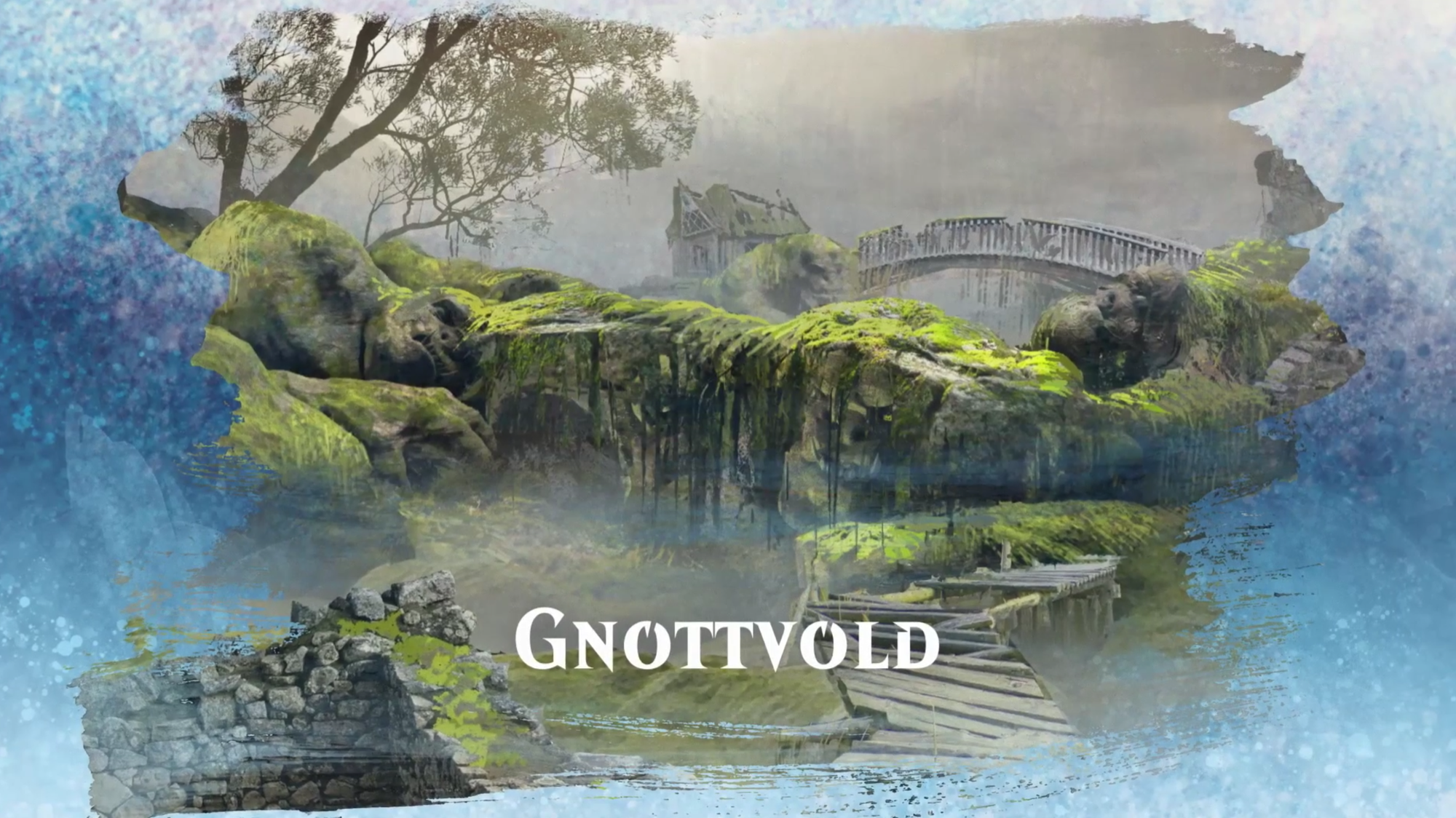
Gnottvold is the realm of the Trolls. “Some trolls fall asleep for a long time and almost become a part of the landscape,” Sheppard said, “but they are terrifying when they wake up.”
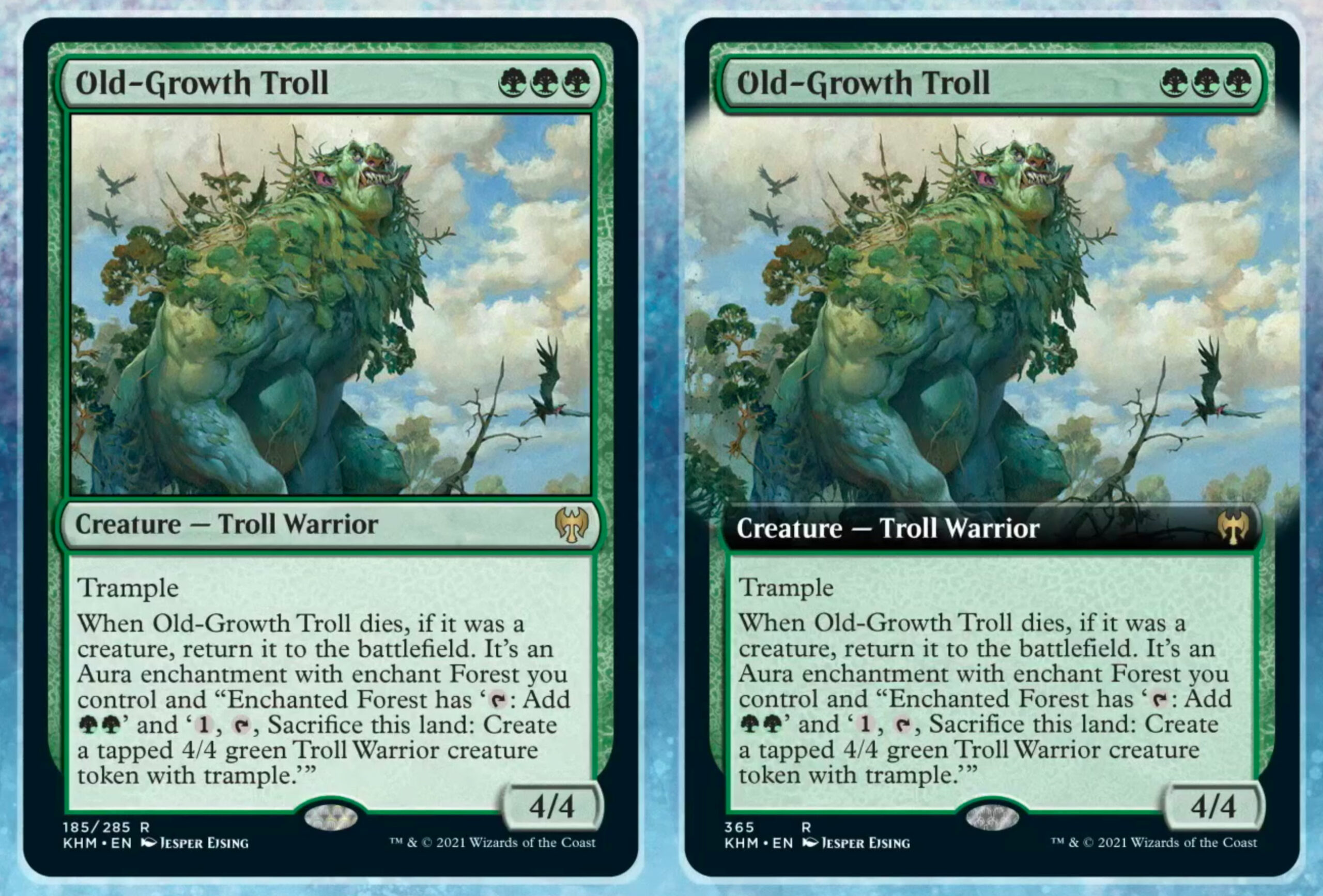
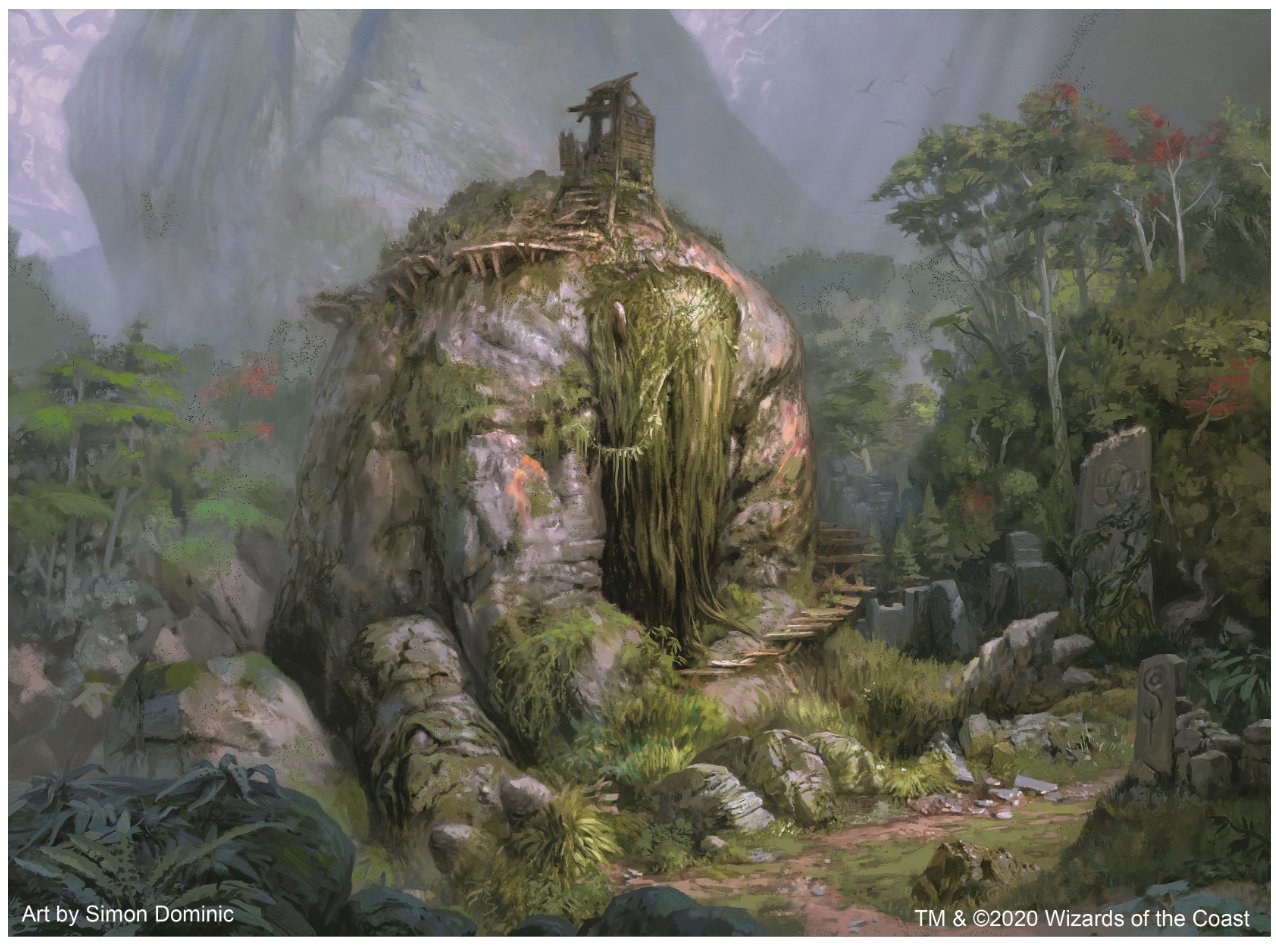
Karfell
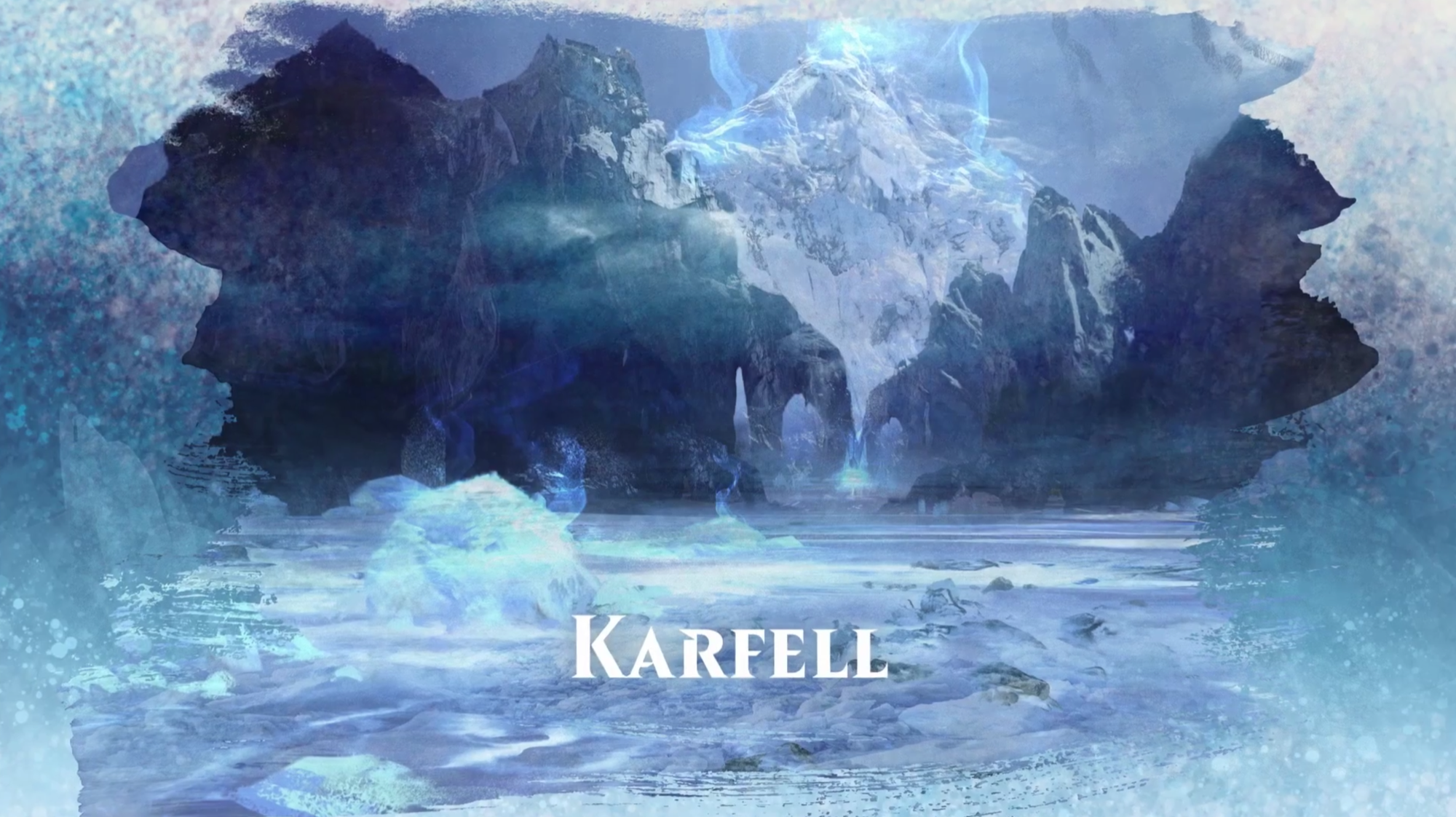
Karfell is home of the Draugr, which are undead Viking zombies.
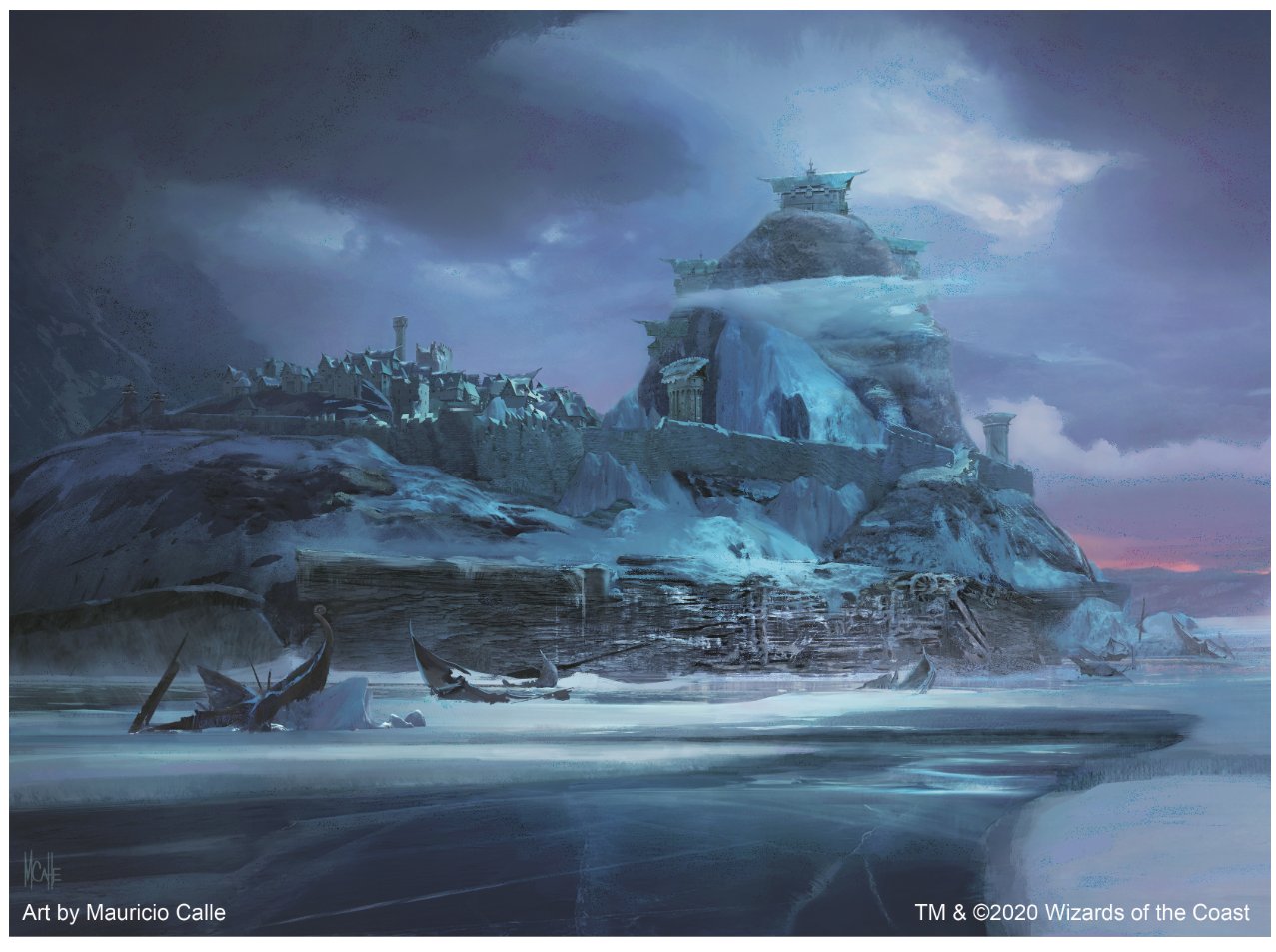
Immersturm
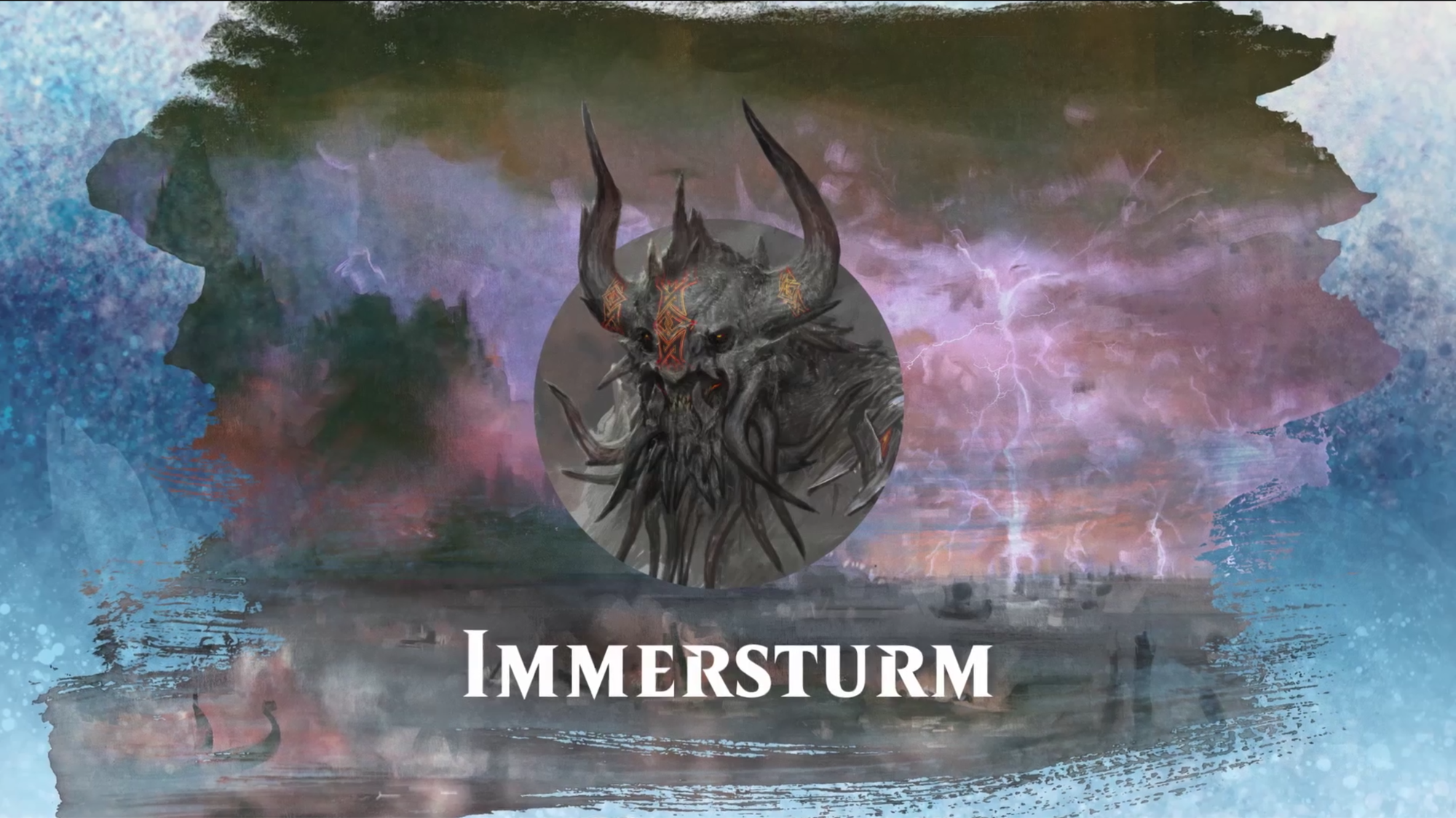
Immerstrum features Demons with horns reminiscent of those found on Viking helmets.
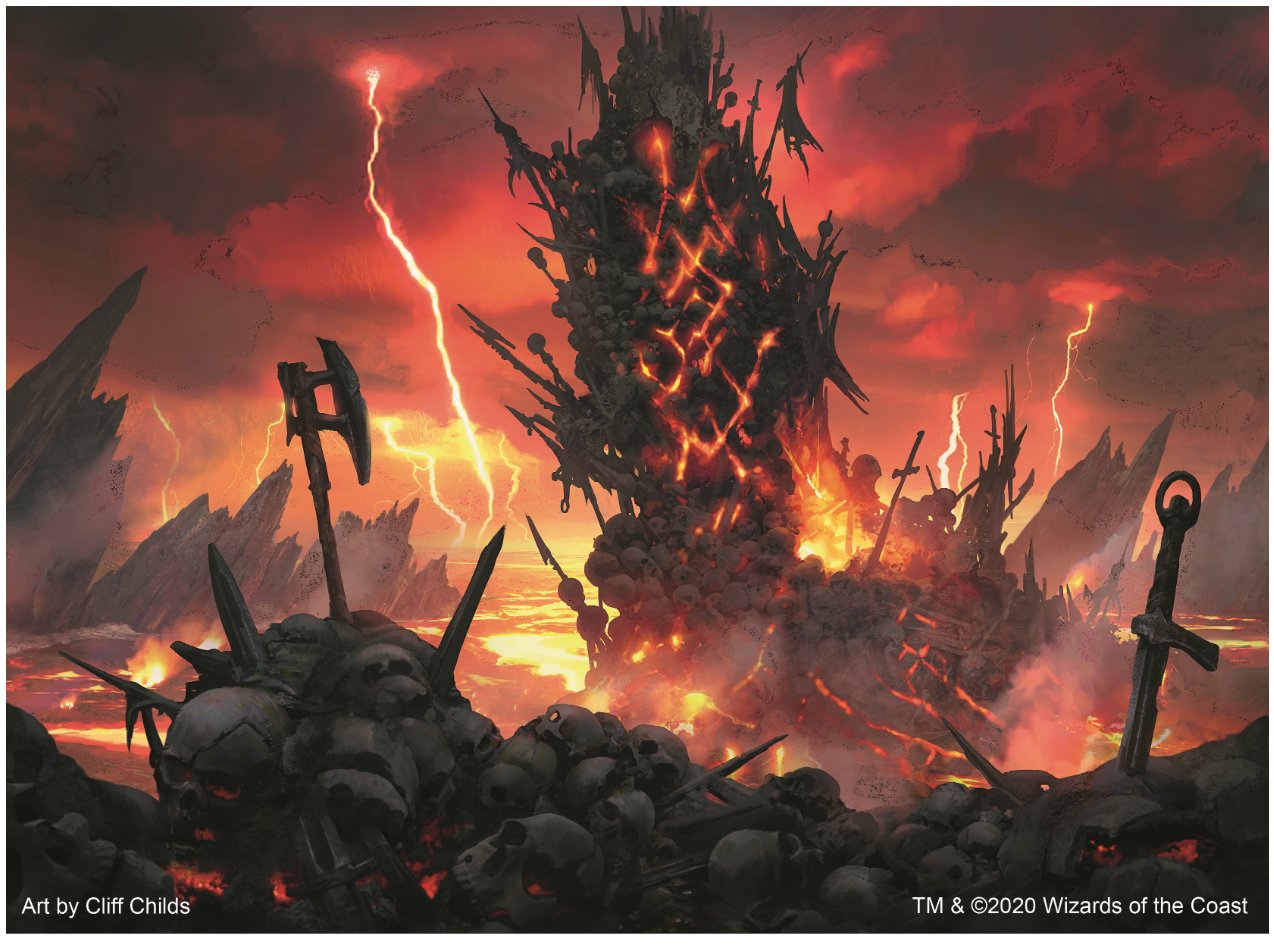
Starnheim
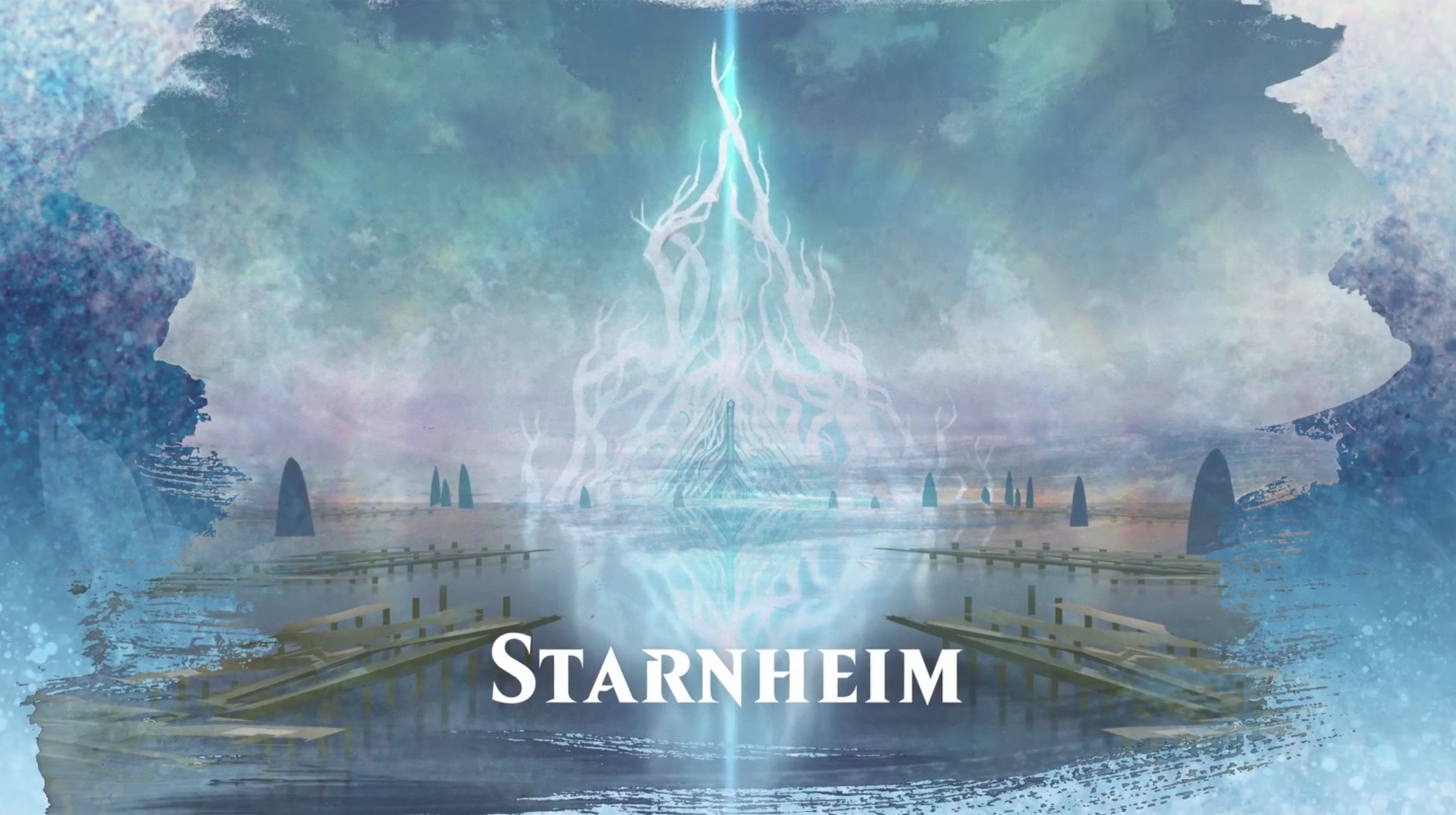
Starnheim is the home of Valkyries, “who will come down and swoop onto a battlefield and pick up anyone who has died gloriously performing an epic feat.”
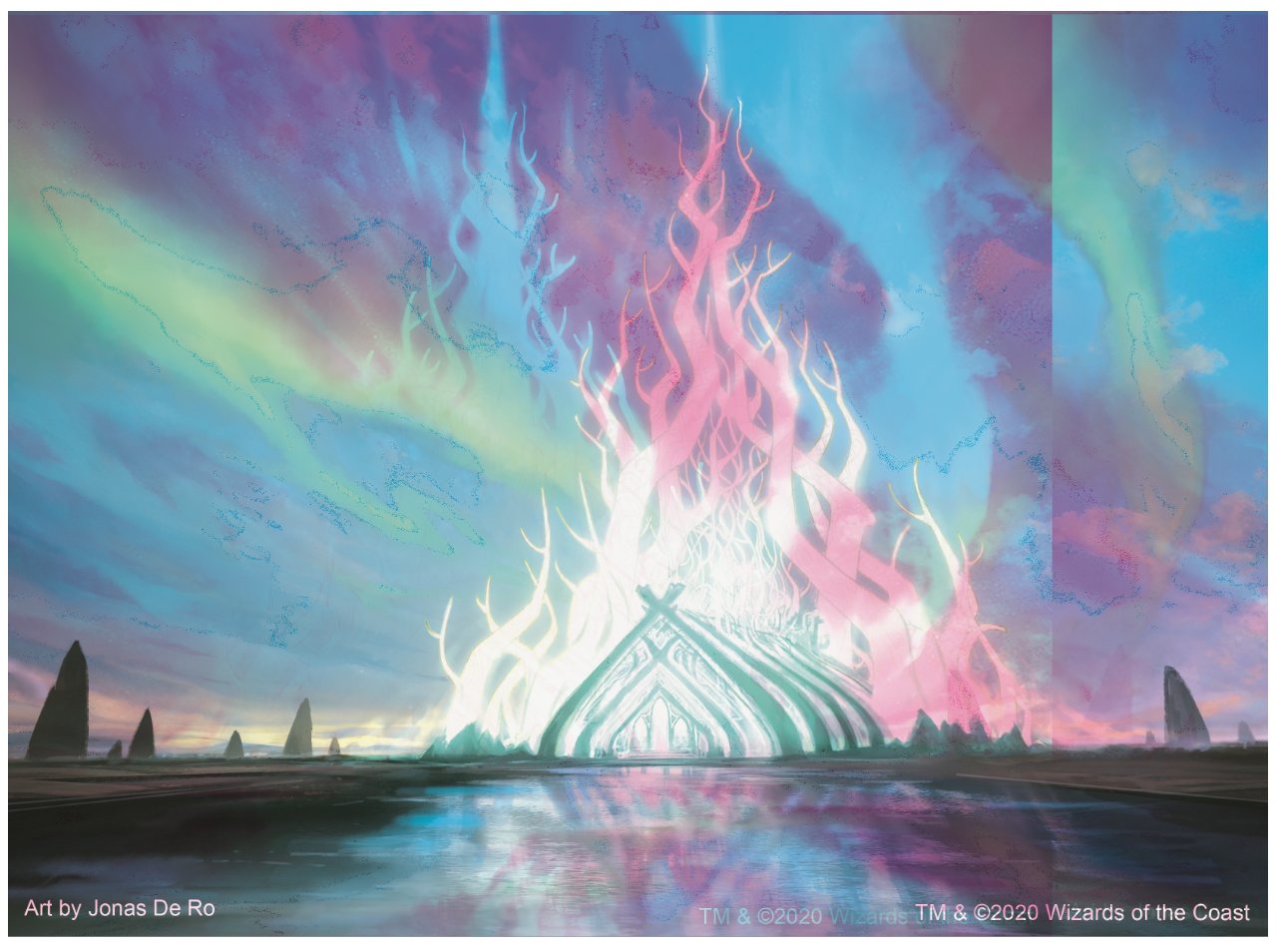
Istfell
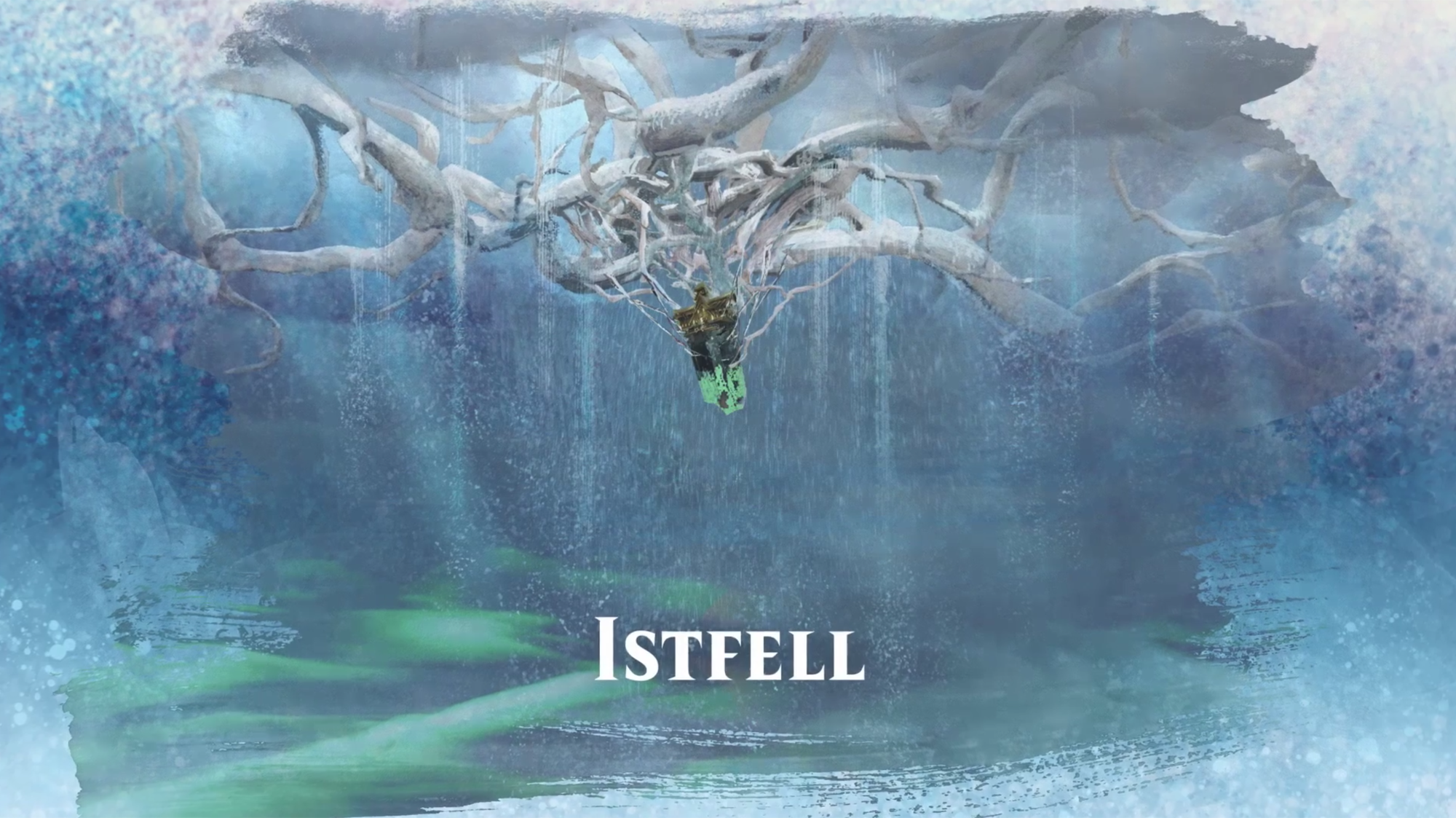
Istfell, on the other hand, is the realm of the Spirits, “which is where you go when—let’s say you don’t die gloriously in battle,” Sheppard said.
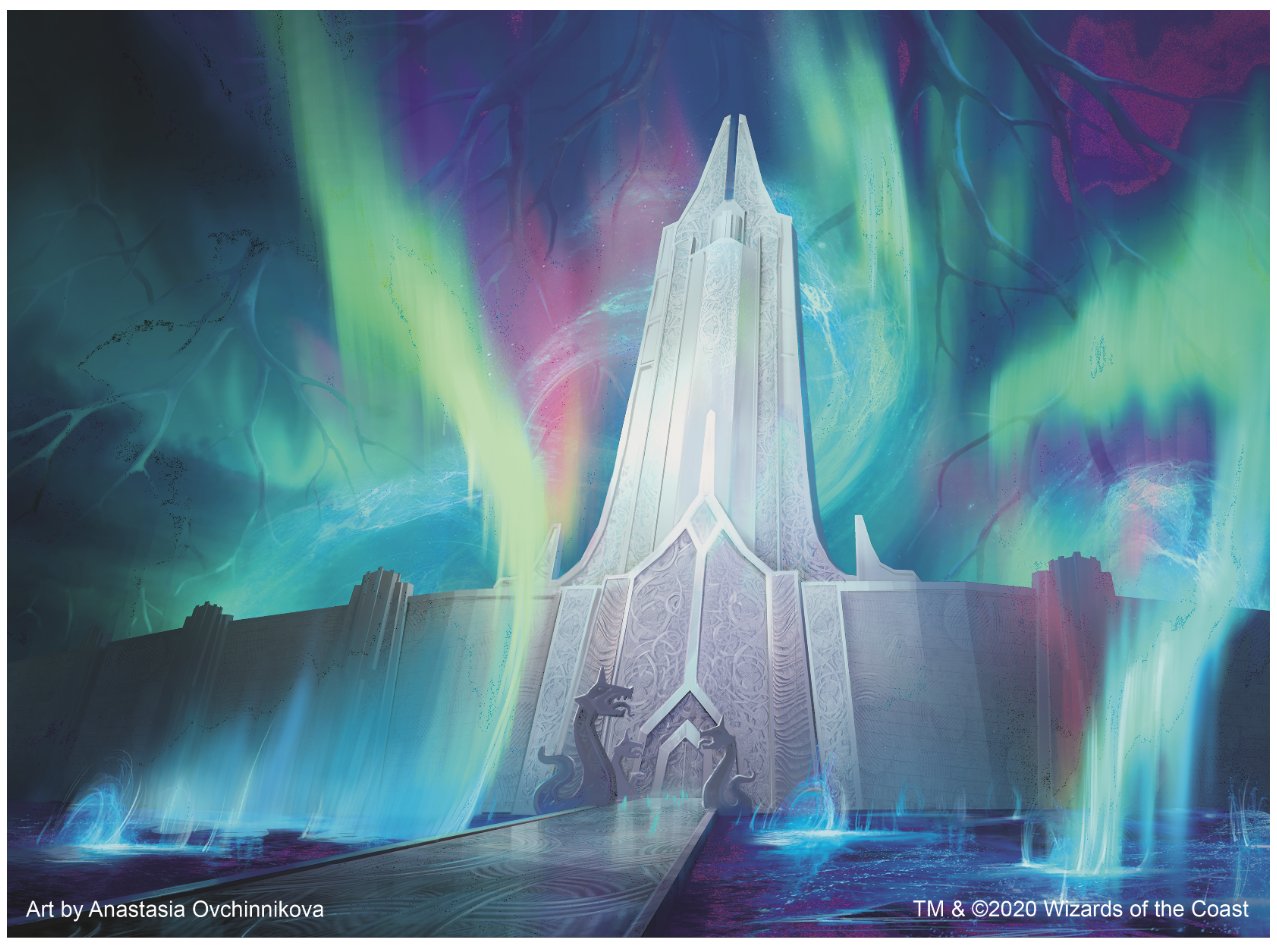
Surtland
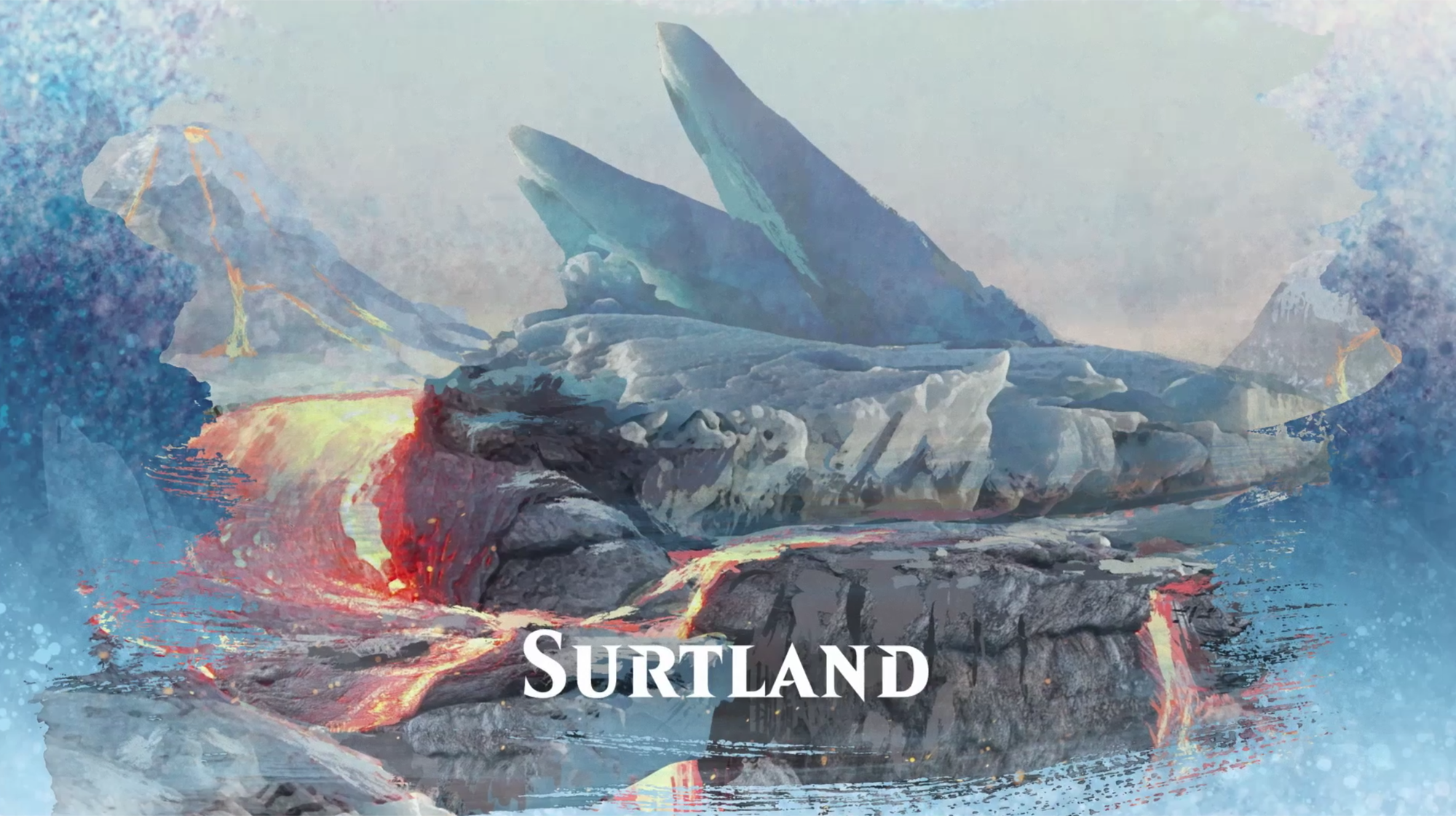
Surtland is the home of the giants. “We have two kinds of giants here,” Sheppard said, “both Fire Giants and Frost Giants.”
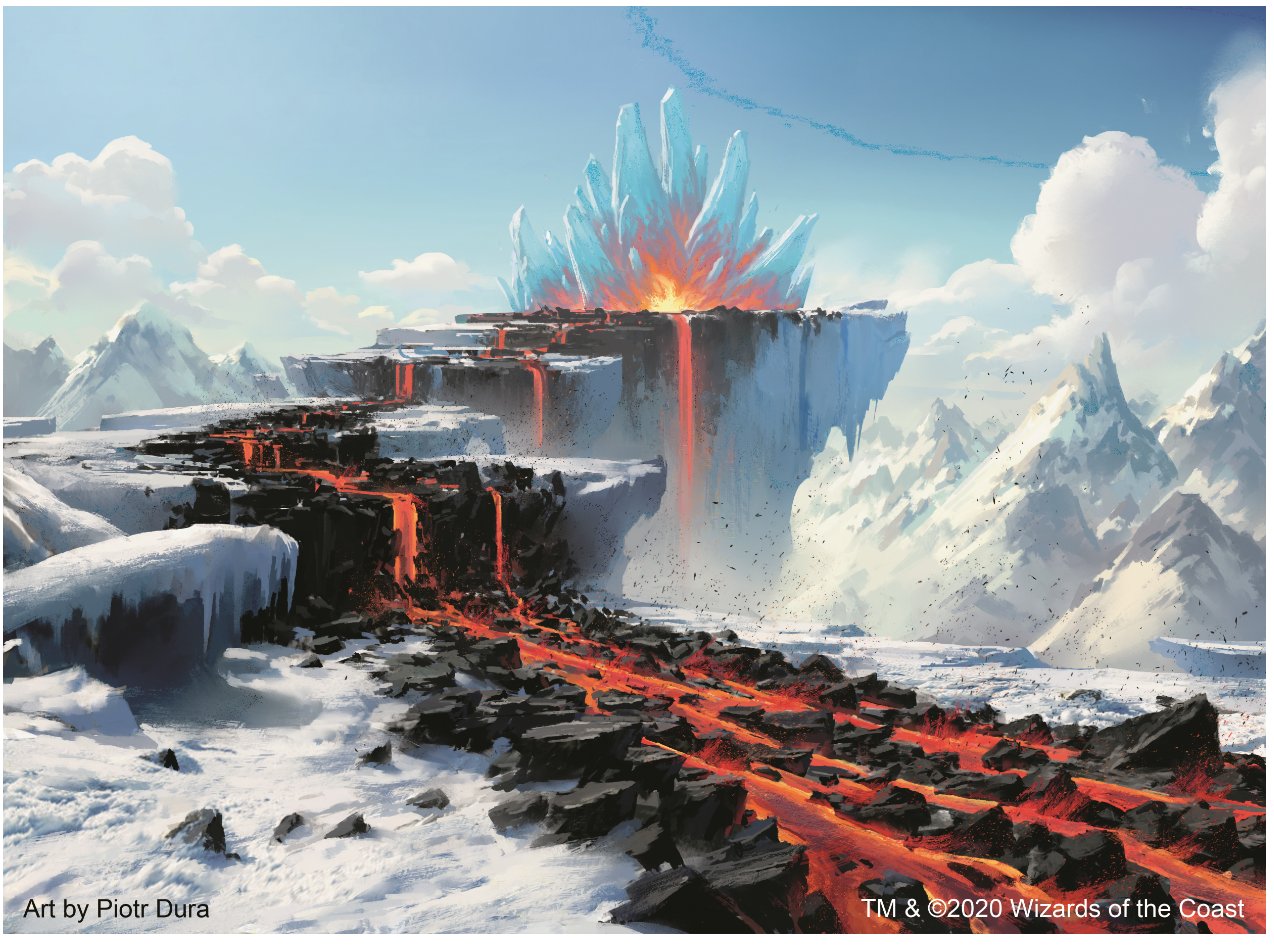
Littjara
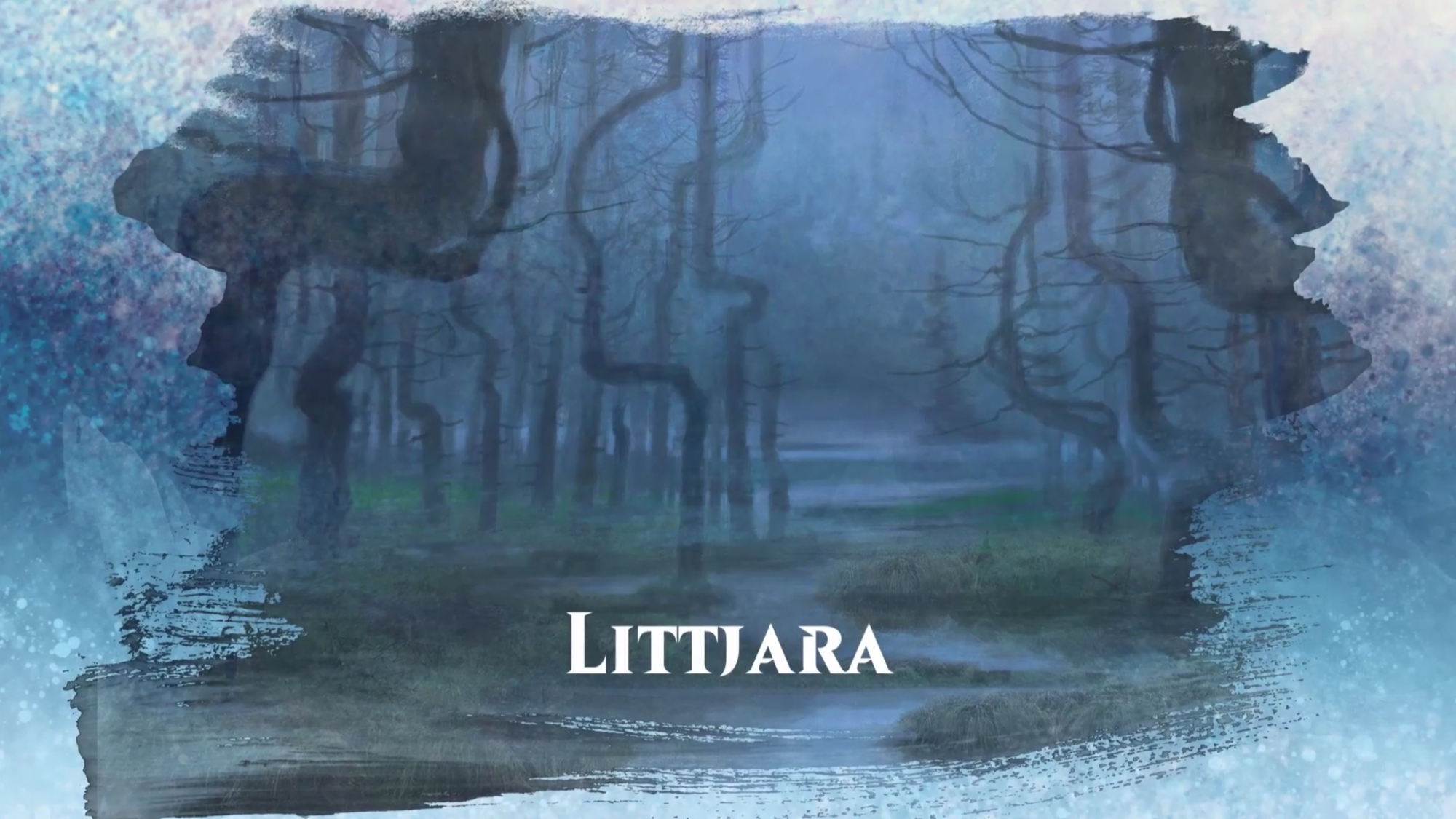
Littjara is the Shapeshifter realm. “The shapeshifters on Kaldheim wear wooden, intricately carved masks to hide their true form,” Sheppard said. Check out Masked Vandal and its sweet mask.
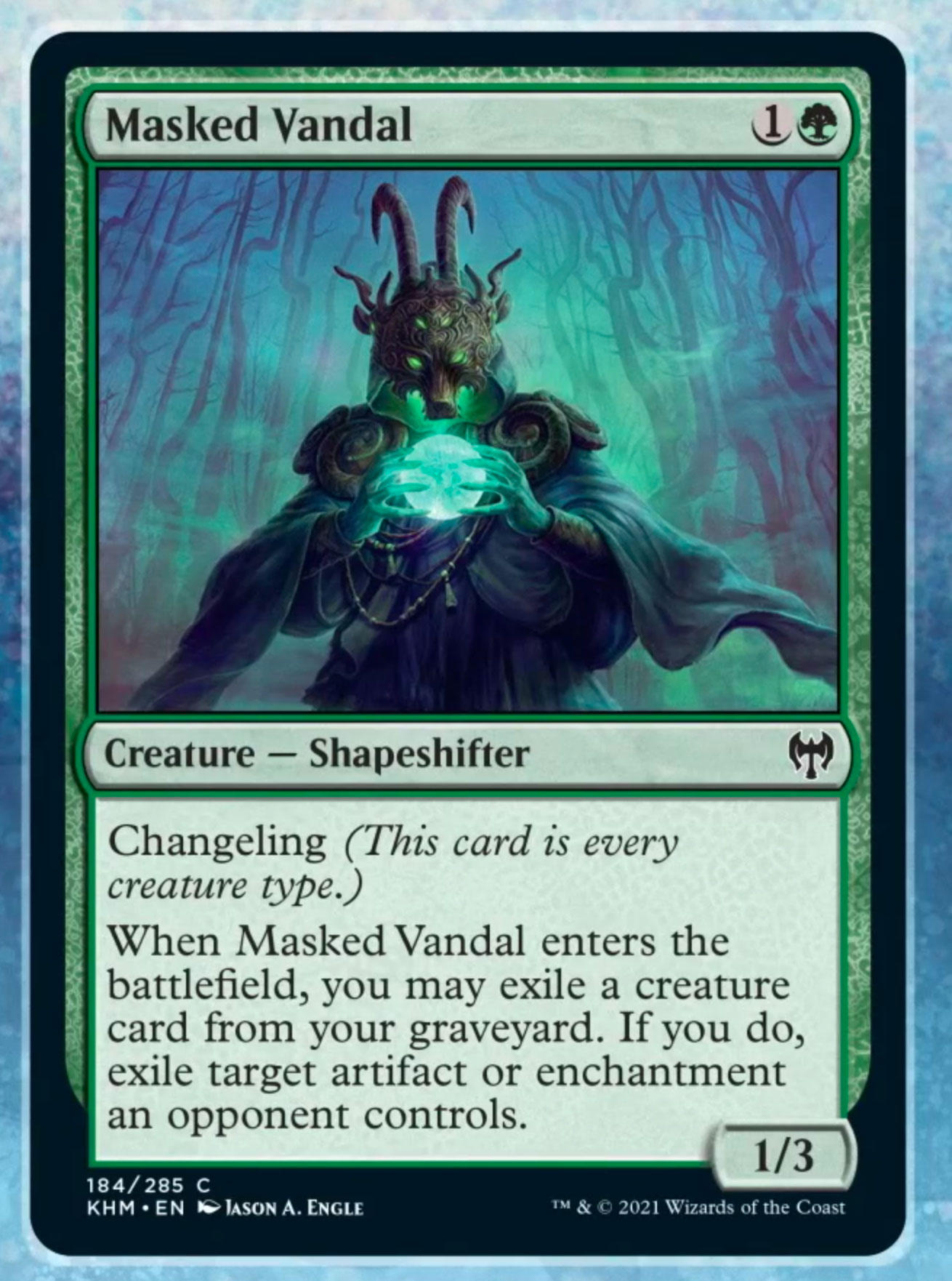
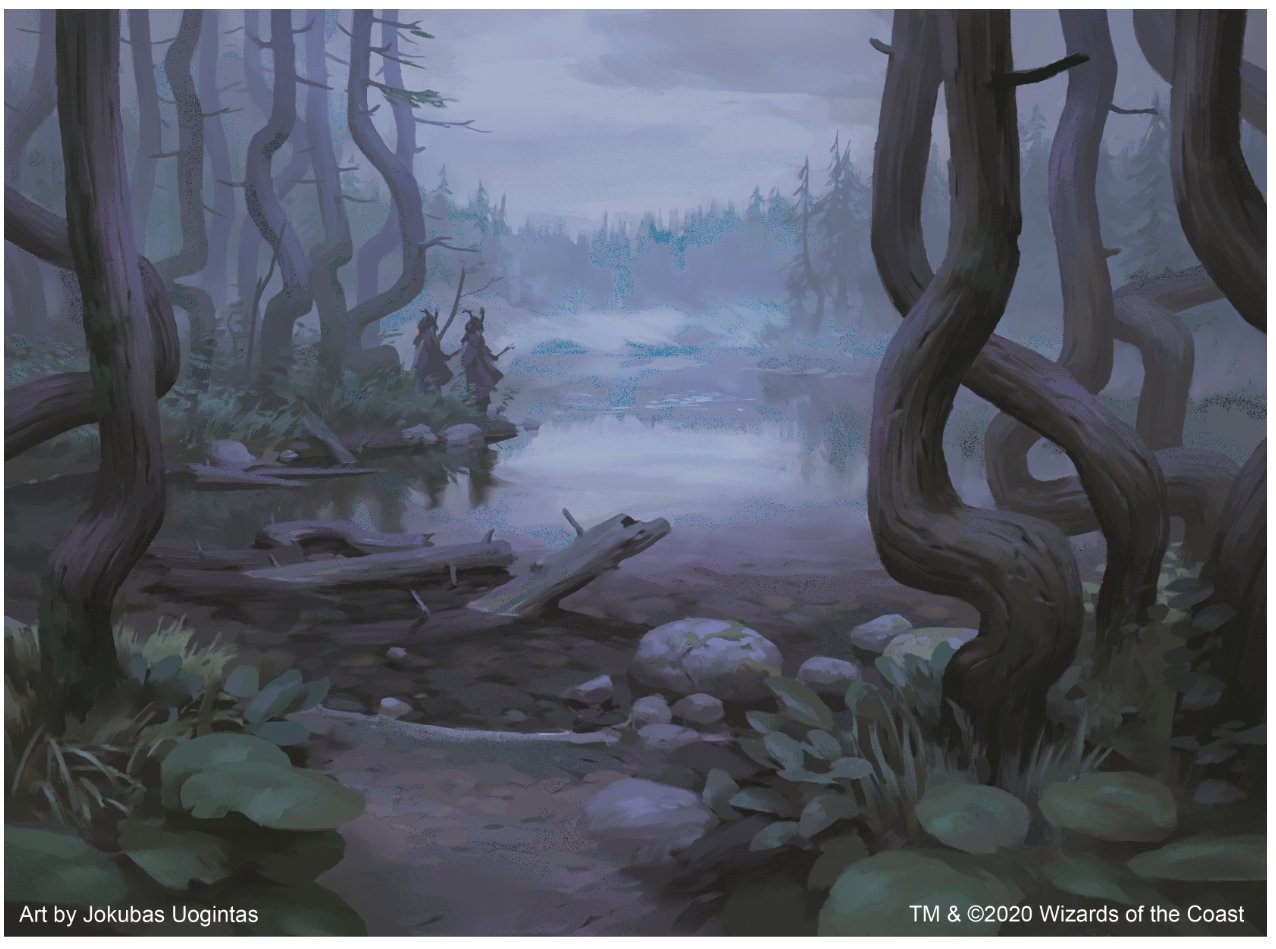
Skemfar
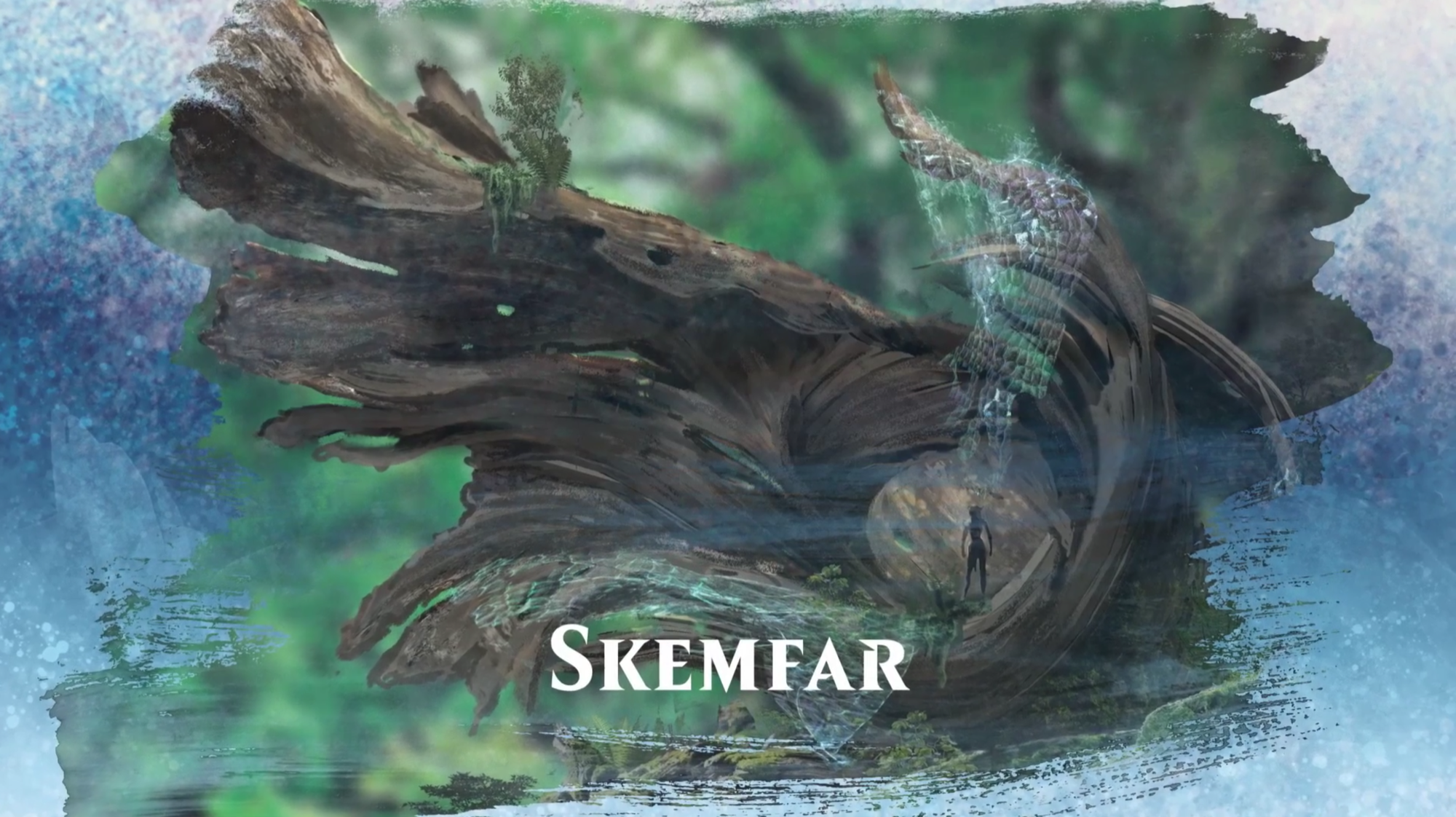
Skemfar is the realm of the elves. “Elves were once gods on Kaldheim,” Sheppard said. “But they were defeated a long time ago and split into two clans. So in the set, we’re going to see two different kinds of elves: the wood elves and the shadow elves.”
